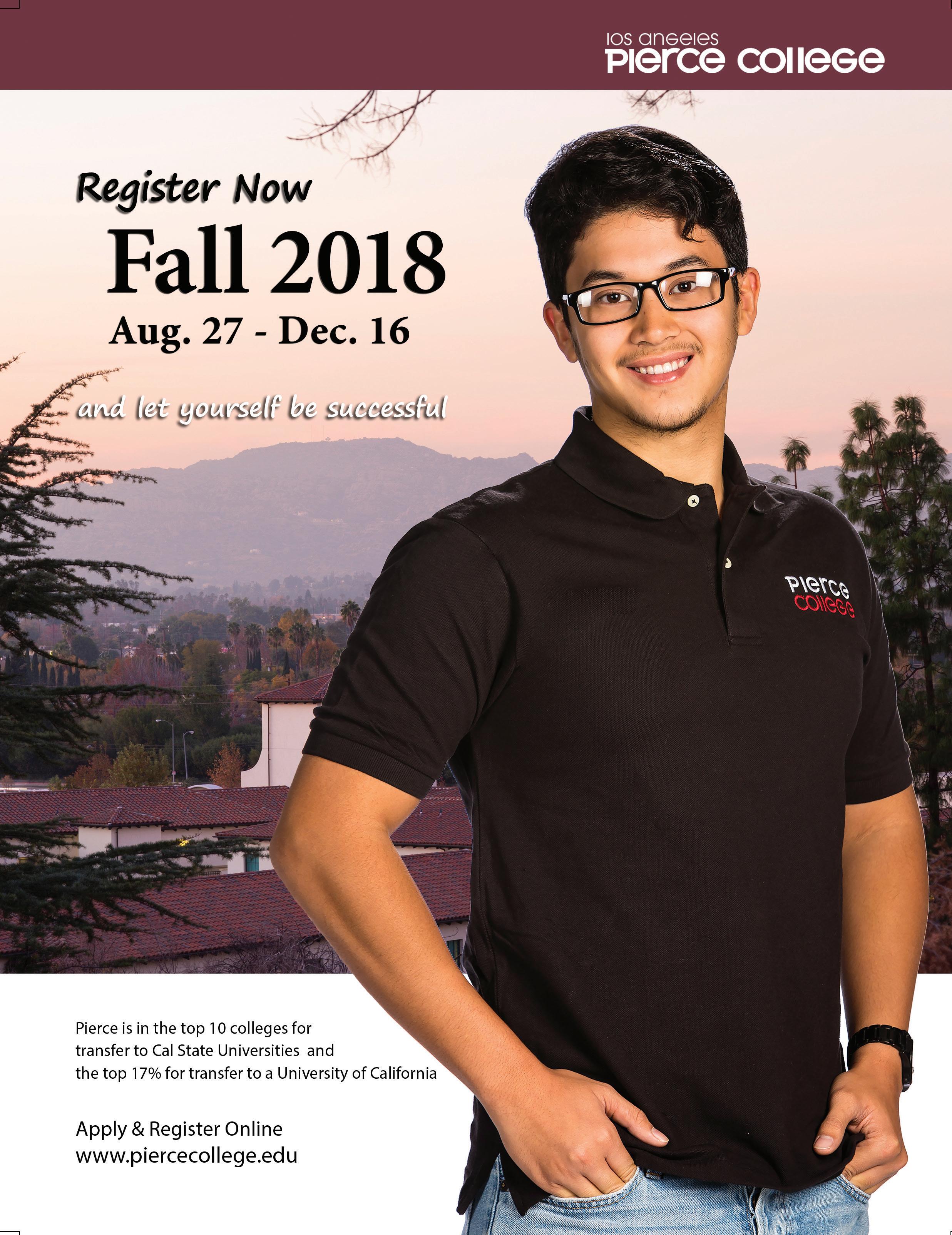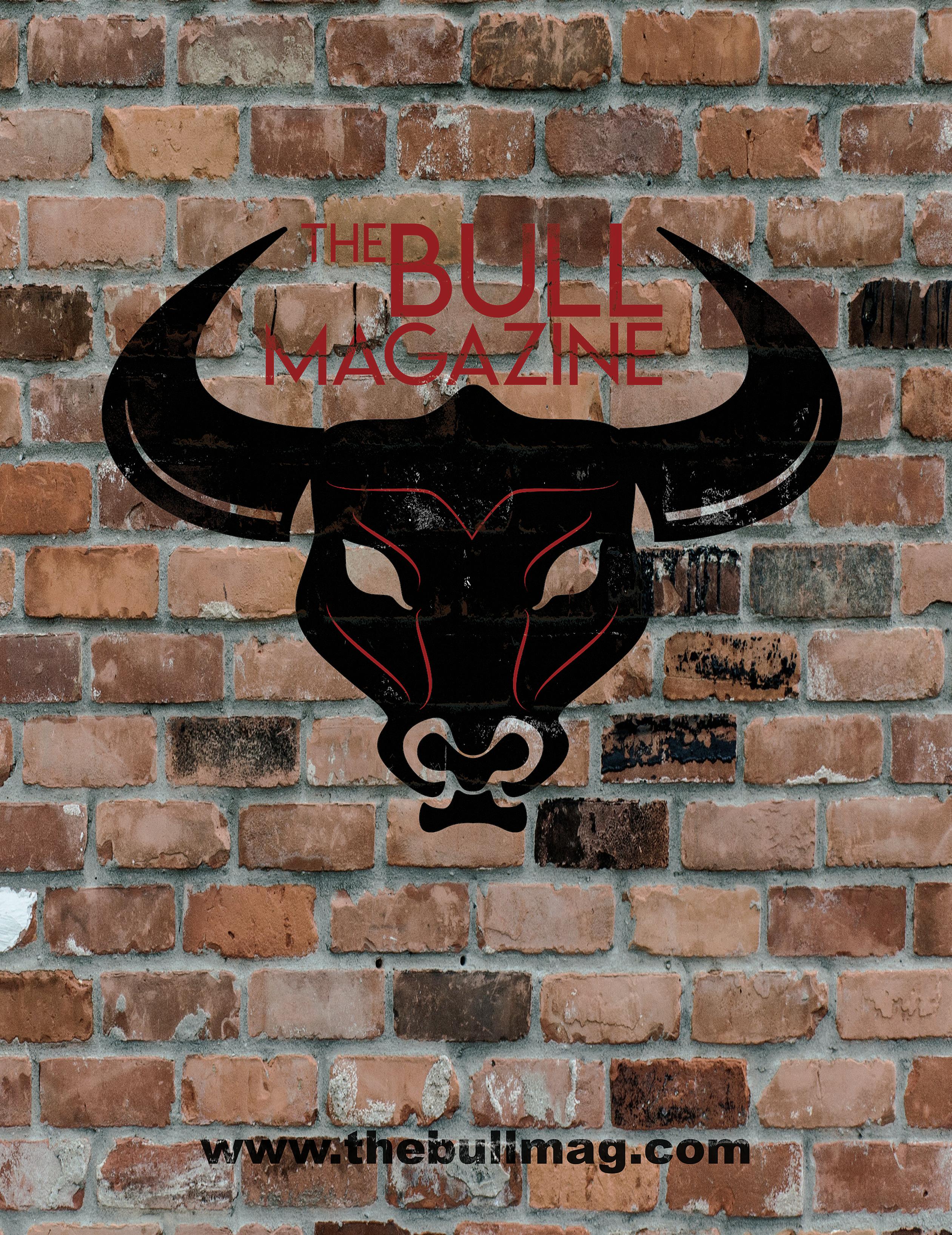Spring/Summer














MegZany
Bringing her message to a street near you

Skid Robot
Crafting scenic locales for the homeless of LA


Spring/Summer














Bringing her message to a street near you

Crafting scenic locales for the homeless of LA



I had thought about putting this letter at the end so I could thank you for reading. Instead, I’ll thank you just for picking this magazine up.
And I don’t thank you just for me, I thank you for all those names at the bottom of this page.
If you aren’t friends, family or featured in these pages, than I thank you doubly — you probably weren’t even guilted into it.
But now that you are reading, I hope you can fi nd something you can connect with.
Street culture is an ever-evolving subject, with pieces of it trickling into the mainstream over the years.
Read it, enjoy it, share it.
Joshua Manes
Bull Magazine Editor-in-Chief

P.S. I’ll let you in on a little secret. While I it is a topic I’m interested in and felt could provide you with some interesting stories and visuals, I really chose the theme so I would have an excuse to write about sneakers.
Joshua Manes
Editor-in-Chief
Anna Clark
Managing Editor

Natalie Miranda
Copy Editor

Andrew Fortin-Caldera
Reporter/Photographer
David Zayer
Reporter
Jordan Nathan
Reporter/Photographer
Martin Moran
Reporter/Photographer
Noah Goldbloom
Reporter
Randi Love
Reporter/Photographer
Richard Espinoza
Reporter
Taylor Arthur Photographer
Bleu Briggs
Photographer Brian Caldera
Photographer Damiesha Williams
Photographer

 COVER: Street artist MegZany. Photo by Bleu Briggs
COVER: Street artist MegZany. Photo by Bleu Briggs
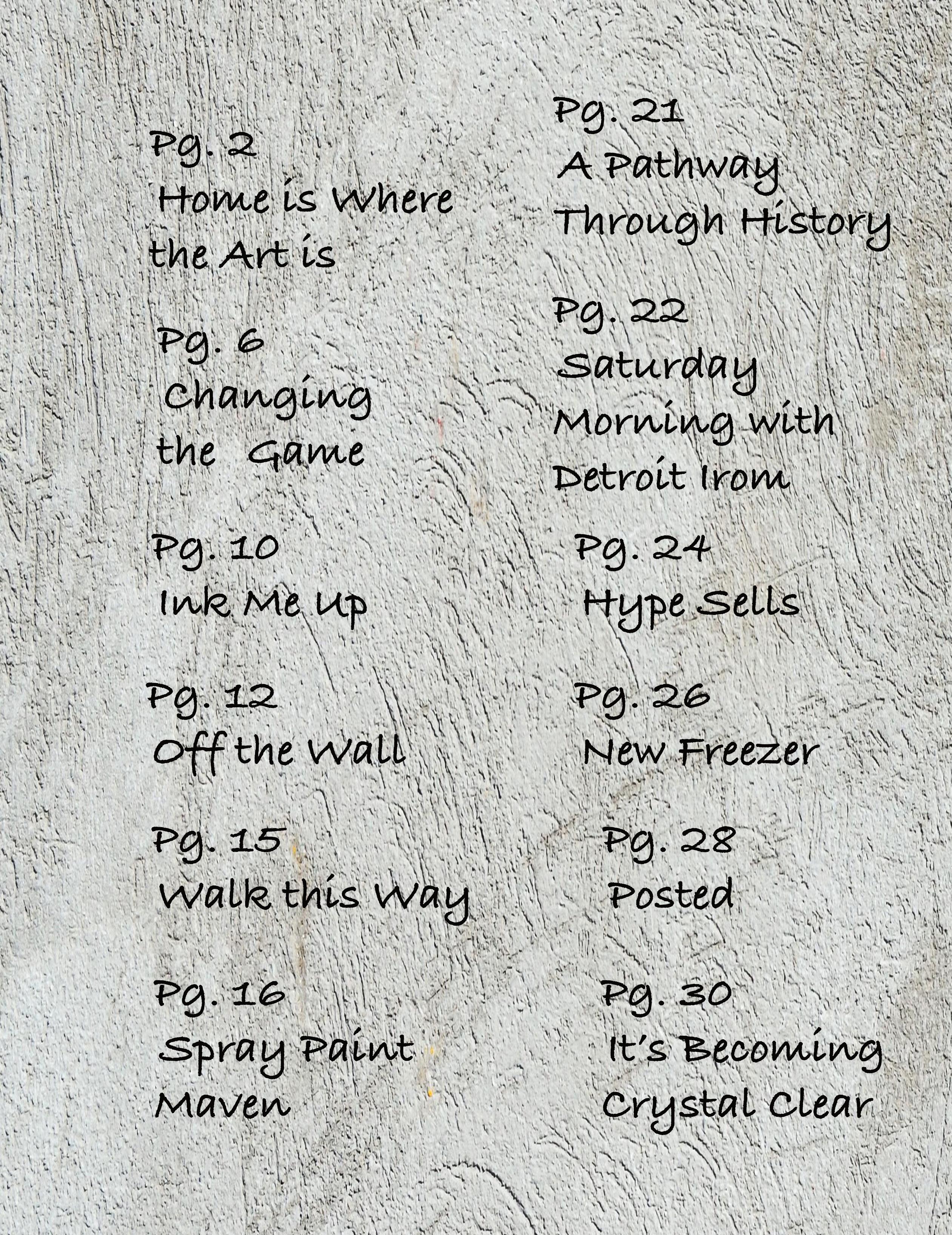
Anonymous artist tries to help the homeless through unique works
 Story and Photos by Jordan Nathan
Story and Photos by Jordan Nathan
The late afternoon sun ends its descent over the streets of Los Angeles as the city begins to slow. Not too long afterward, the sounds of a spray can go off down a sleepy crowded street filled to the brim with tents and people.
The artist paints a simple dream bubble of money on the wall of the building downtown, right above a sleeping homeless woman.
Skid Robot, an anonymous graffiti artist, has been working in the Skid Row area since 2013, creating his own brand of art to help fight the poverty among Los Angeles’ large homeless population. He wants to alert others to the problems that come about from having American citizens living on the streets of LA, and it all started on a date.
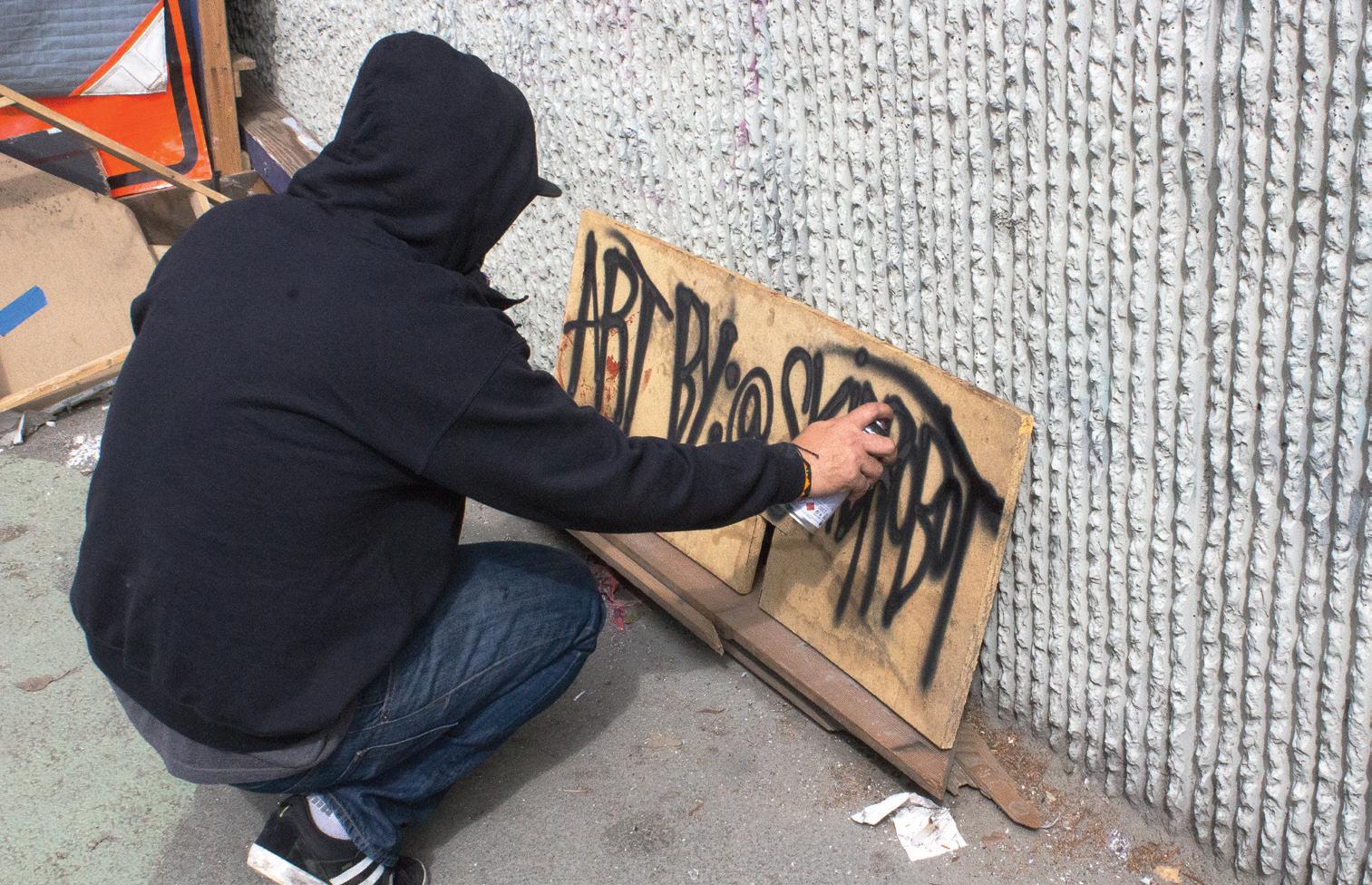

“I was doing my thing, catching tags and looking for spots,” Skid Robot said. “I started talking about how I wanted to do something different with graffiti, because of the explosion of street art in recent years.”
Their conversation took a sudden halt when he noticed a lone figure sleeping up against a wall.
His girlfriend suggested that he paint a picture of the person dreaming of money because most people dream of being rich. He parked the car, grabbed a can, and brought the idea to life.
This was the moment where he realized what he had hoped he could accomplish. He wanted to use his art to find a solution for poverty stricken LA.
“There’s a lot of people in this battle,
in this arena that have different solutions,” Skid Robot said. “I, as a graffiti artist, as an individual, as someone with his own views and perceptions of things, don’t always feel myself meshing in because after certain solutions like Measure H passed, which combats homelessness. We are still seeing an increase each year by 10 to 12 thousand people.”
Skid Robot has been working hard to ensure that there are different ways that his art can help the homeless. He paints art that impacts each person he interacts with. He has created living environments. For some, he will buy furniture, such as beds, chairs or tables. For others he will paint a themed background on the wall where the homeless individual lives that shows that art is more than just paint on a wall. It is something that can take you places.
“With the 3D installations, the tiny living rooms, the tiny houses, these took the 2D element of graffiti art and brought them out into our reality. That makes them tangible and occupy space as well as create gravity for where they are,” Skid Robot said.
Most of the Skid Robot art can be found on Instagram, which has been the main outlet for his compositions. He also has a personal website where he uploads photos, allowing people to get a feel for what he is doing, which he hopes gives people ideas on what they can also do to combat homelessness.
Crushow Herring is a community organizer on Skidrow who creates art under the name Showzart. He was originally wary
ABOVE: Skid Robot paints his tag @SkidRobot on a piece of scrap wood that he will place in front of Rusty’s cabin in Los Angeles, Calif., on March 13, 2018.of what Skid Robot was doing with his art works in the Skidrow area. But, after talking with Skid Robot on social media, he realized that there was more to what Skid Robot was doing.
“Last October he called me in to work on a project in Skidrow and I was stoked, and from that point we mashed together so well that we have a company together, which I call Showbot,” Herring said. “Intertwining his art and my art together to help move communities has worked out better, and I’ve had more movement and more joy out of it.”
Herring has been working with Skid Robot for the past seven months. He believes that Skid Robot is doing an amazing job.
“He is really trying to raise support and is someone to get behind,” Herring said. “He is really about the movement and different people out here are really faking it, while he is not. He works hard from his own pocket and he buys everything on his own for his projects.”
Lesa Jara, the Skid Robot Project manager, has been helping Skid Robot for almost three years. She met Skid Robot while filming and interviewing various artists for a project in Skid Row. Skid Robot also was taking part in the same project and Jara became his project manager soon after.
“I have seen first-hand the dedication and thought Skid-Robot puts into every project. The art and installations bring a joy and sense of pride to the homeless community, along with publicly addressing the issue of homelessness,” Jara said.
Jara said Skid Robot has been working with Studio One Eleven and SCAMPH on curating an exhibit in Long Beach, which will showcase the works made by Skid Robot and his Living Art Project. The City
Council of Long Beach will be attending, along with many prominent like minded people.
Skid Robot uses his creativity to help those who are not getting the proper help or care that they deserve. One such individual is Birdman. He is friendly with animals and would often stand over U.S. Route 101 and entertain people for money.
“I built a tiny house for Birdman on Alvarado under the freeway, and the city came and took it,” Skid Robot said. “I went back with Birdman and I tagged the @ sign to Eric Garcetti with the message, ‘You can take a man’s house, but you can’t take his spirit.’ I posted it on Instagram and told my followers to tag this post to let the city know that this was not cool. Forty-to-fifty people tagged it, up to the point where the mayor responded, which blew everyone away that the mayor of LA would respond to something like this.”
This action has helped kick-start a large reaction to what is going on in Skid Row. Many other groups have followed suit tagging the mayor if some injustice is done by the city against the homeless population.
The Los Angeles Community Action Network (LA CAN) is located on Sixth Street in Skidrow. Their mission is “To help people dealing with poverty to create and discover opportunities, while serving as a vehicle to ensure we have power and opinion in the decisions that are directly affecting us.”
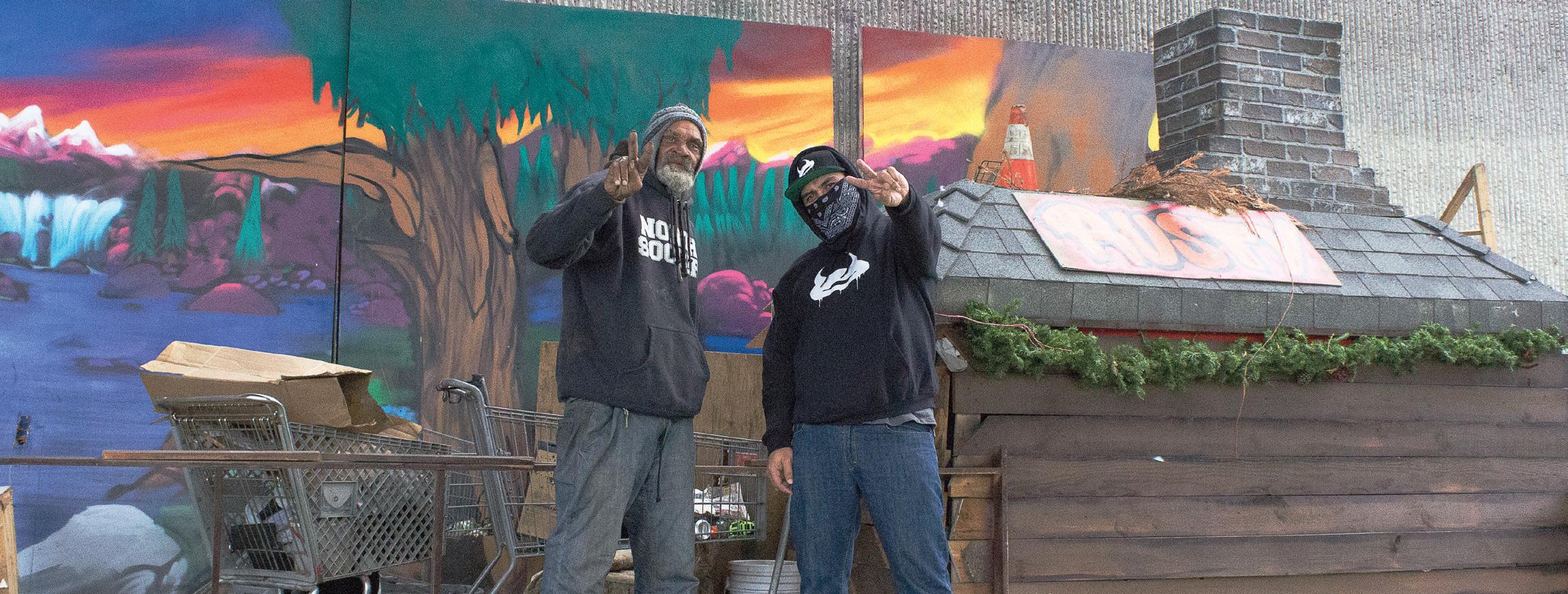
Community Organizer Ariana Alcaraz is a part of the action team at LA CAN and thinks that what Skid Robot is doing as an artist is beneficial to the homeless community.
“Skidrow is seen as a place of last resorts,
a temporary place. And when people come together and when artists emerge from the community, it shows the community that is here, and the spirit of people who do positive things to improve the community with whatever they can do to instill some kind of hope that there is power with coming together and being united. Art and culture is important to this community, and it is a form of expression and resistance to the over-policing and the lack of housing. It is an important component for people here,” Alcaraz said.
The homeless situation in Los Angeles continues to grow, with a 75 percent increase in the past six years alone, according to the Los Angeles Times.
“The homelessness crisis is not improving. We believe that the numbers are increasing in Los Angeles. The reason for that is that even though we are seeing the city and elected officials moving towards building housing and making it easier to build housing, there is nothing really being done to keep people from becoming homeless,” Alcaraz said.
Skid Robot’s mission is to continue finding ways that no one else will to fix this problem. His art evokes happiness and support among the homeless, and he knows a solution is out there.
“As this project evolved, I began to evolve. I am emphatic and I care about the world that I live in. As I walk around on the streets and talk to people, I can learn about their situations. A big part of my project is to tell these stories, and this project continues to move along in new directions that I never could have imagined,” Skid Robot said.
Skid Robot makes peace signs with Rusty, a homeless man who has lived on the streets for more than 15 years, in front of Ol’ Rusty’s Cabin that Skidrobot helped build for him in Los Angeles, Calif., on March 13, 2018 Infographic by Joshua Manes
Infographic by Joshua Manes
Afresh white canvas sits prepped and ready. With the simple pull of a trigger, paint sprays from the airbrush. The nearly invisible mist covers both fabric and tape, bringing life and vibrance to the new piece.
But it won’t be hung in a gallery or a home. In fact, this work of art will spend most of the time below eye level.
Troy Cole, known in the sneaker, fashion and art worlds as Kickasso (like Picasso), is a member of a growing community that combines all three of those worlds — sneaker customizers.
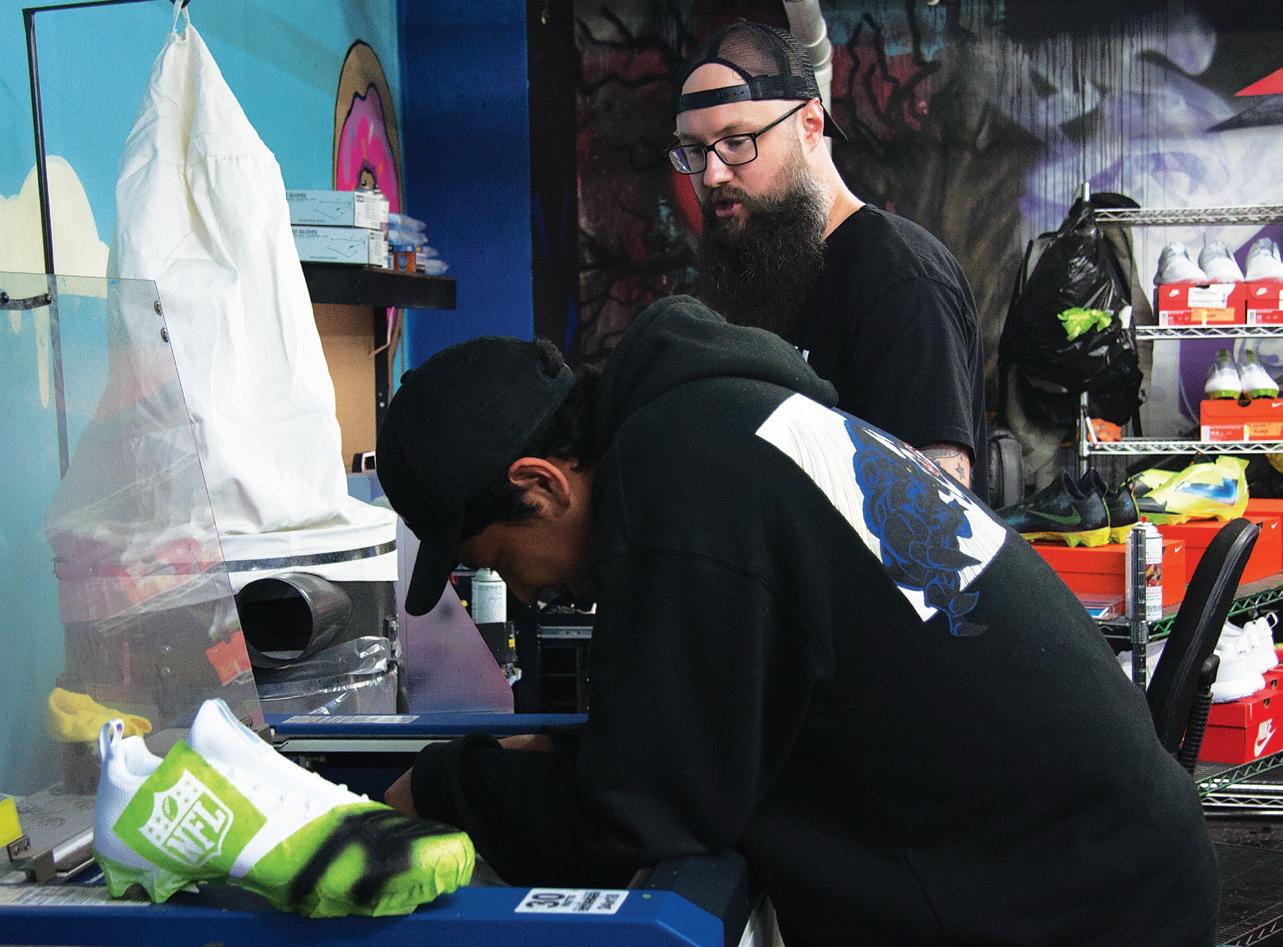
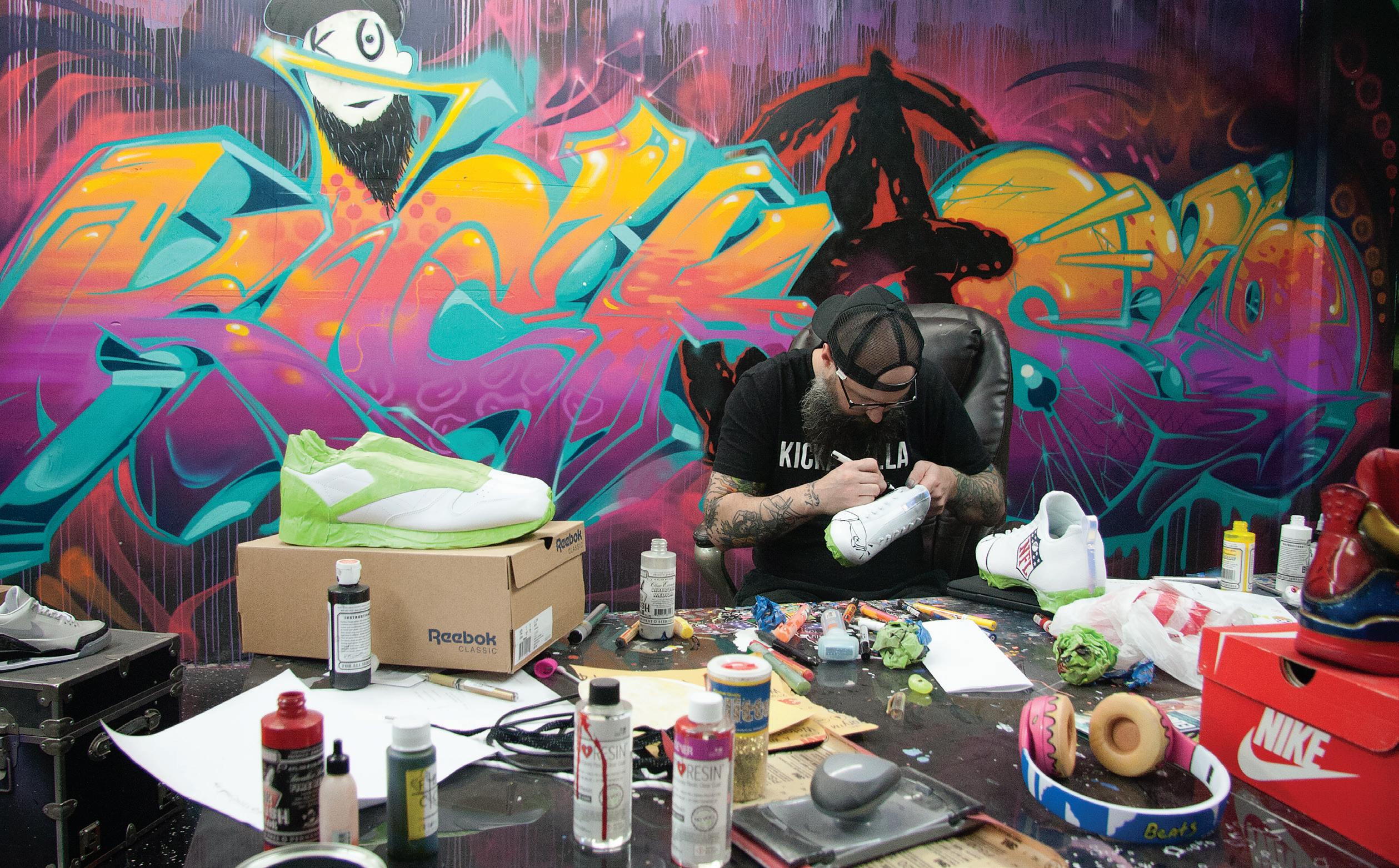
According to Cole, he has been customizing sneakers since 2011, drawing on his shoes with a ballpoint pen in the years prior to that. And while he may now be one of the most recognizable names in the industry, Cole didn’t start off making masterpieces.
“I was using the wrong paint and it just wasn't going to work,” Cole said. “But it was a step in the right direction and it allowed me to be artistic on shoes.”
That love for art and shoes has been a part of Cole
for years.
“My first foray into art was just basically drawing in the margins like on my notebook in grade school,” Cole said. “From there the love of drawing and art just grew.”
Cole said that when he was in second grade, he won a contest he didn’t know he was a part of.
“Somehow through the art class that we were in just regular art class, it won the prize of being displayed at the University of Texas,” Cole said. “That was my first taste of ‘Oh this is cool, and I’m good at it.”
His introduction to the world of sneakers wasn’t a positive one like it was in the art world for Cole. He said that, while in fourth grade, some of kids made fun of his shoes.
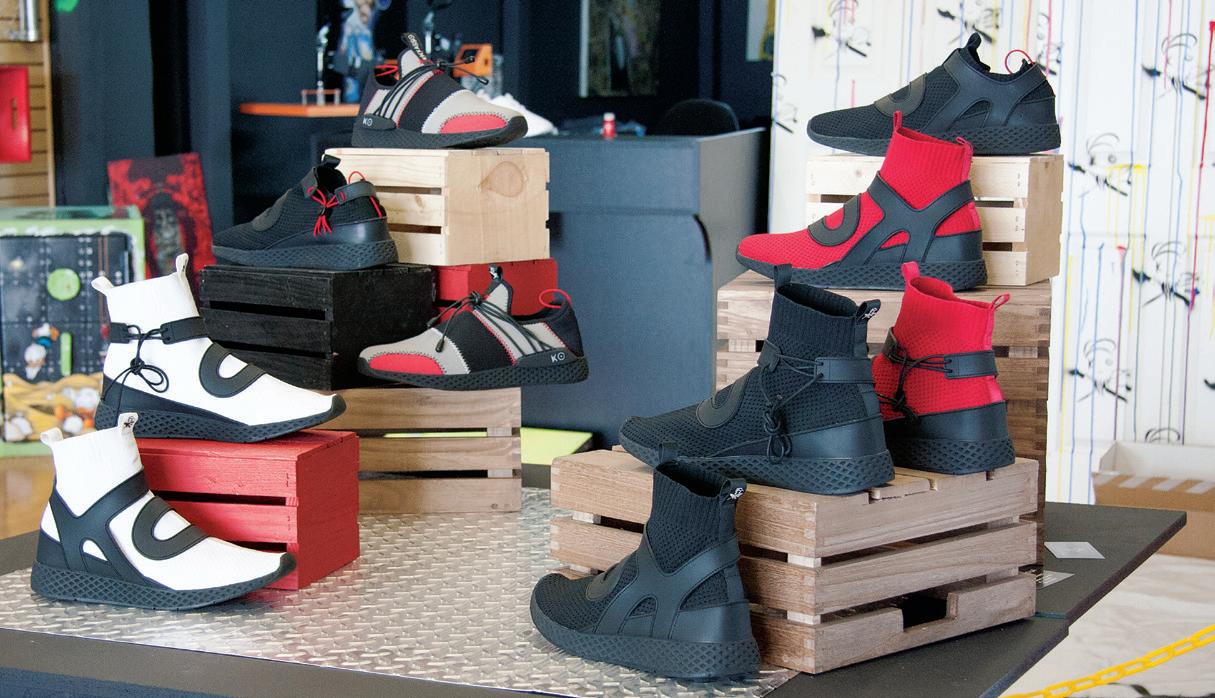
“I never had really nice shoes. My family couldn't really afford nice things,” Cole said. “I think I had a pair of black Keds on at the time. You know, something that you could buy at Payless or Penney’s for probably nine bucks.”
Cole took the ridicule of his classmates and made a pledge to himself.
“From that point on I just kind of made it a point to make extra money and stuff to to help my parents buy nicer shoes for me just because I didn't want to get ridiculed,” Cole said.
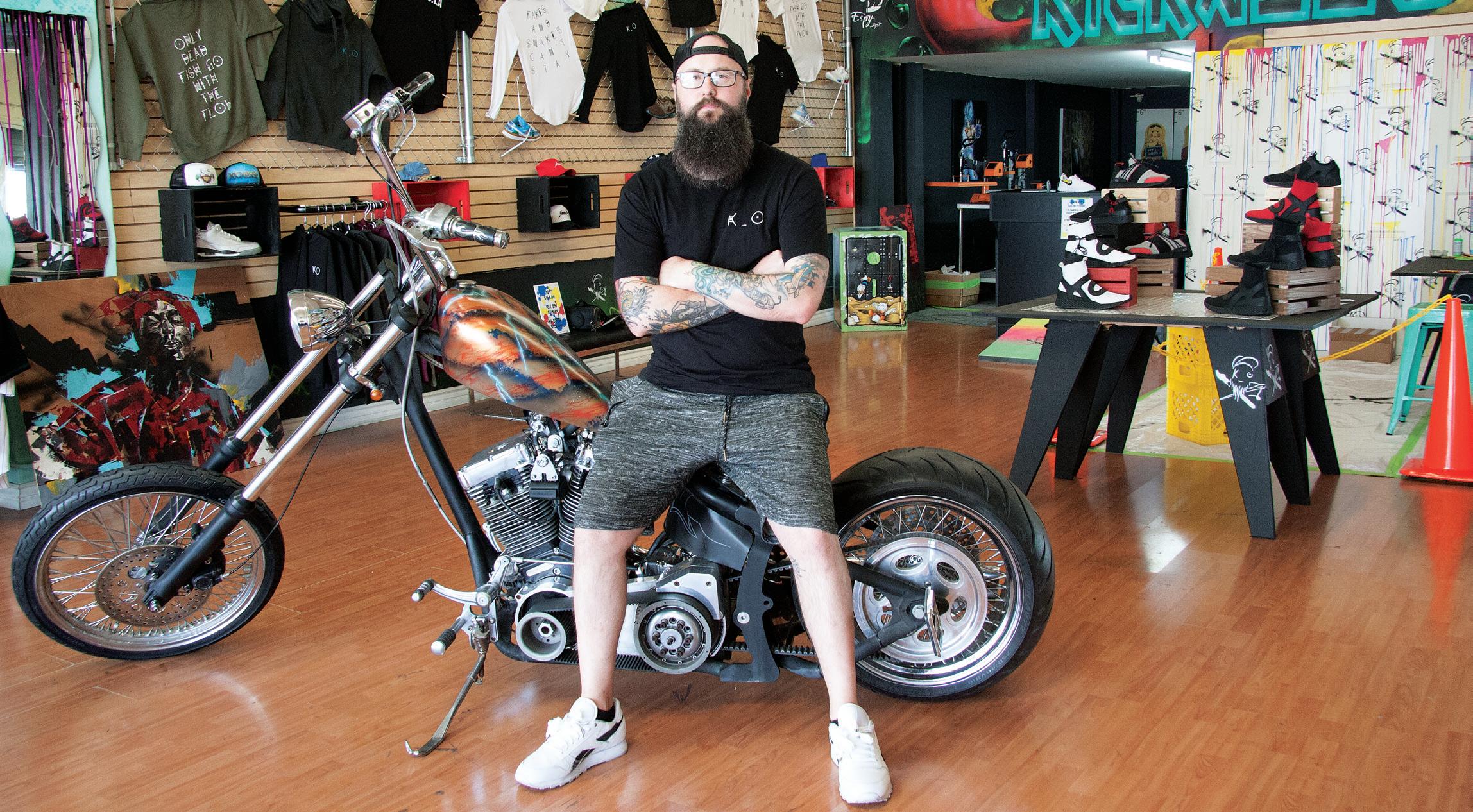
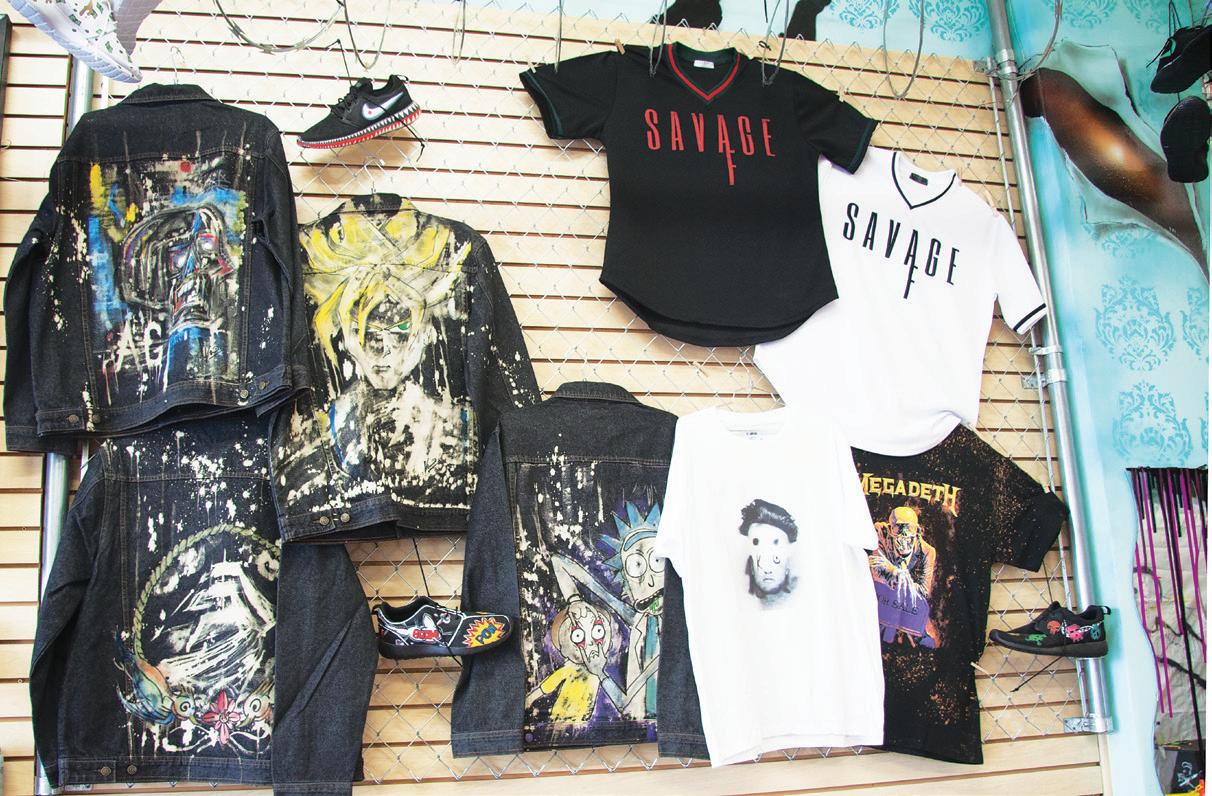
Cole’s first big break came when NBA player Al Harrington contacted him through instagram to do a pair. However, it is in the NFL that Cole has made his mark.
Cole has outfitted numerous players including Jalen Ramsey, Jarvis Landry and Odell Beckham Jr. While cleats may be the most common item he customizes for players, it was a pair of gloves for Beckham Jr. that really caught fire with the public.
“I mean that's why we do what we do,” Cole said. “Just
being appreciated for what you do in the art world is a rare thing for artists while they're living and to be able to do what I do for a living and see my stuff on the big screen, that's the payoff for the time and the effort that I put into building this brand.”
Cole was invited to speak at the NFL Creative Conference 2018.
“It's pretty funny to see kind of the impact that Odell and I had on everyone, including other players, but also in the front office people. At the creative summit people treated me like a rock star, like a celebrity,” Cole said.
Jordy Geller, curator of the Shoezeum, considers Cole to be one of the top customizers around along with Mache.
“Those guys have been getting their custom shoes on the feet of NFL players and other professional athletes and it's super cool to see how creative these guys are and they're able to execute their inspirations so well,” Geller said.
Cole has grown from just customizing sneakers. He designed and produced his own line of shoes, the K_O 1.
“When I draw in my free time it's always been shoes or cars,” Cole said. “I got serious about it at the beginning of last year when my designs were getting a little bit of attention from certain people.”
According to Cole, he was approached by a man whose family owns factories in China that produce shoes for Nike and Adidas.
“He liked my design so much, he was like, ‘I mean we can make these,’” Cole said. “For about six months we were just throwing ideas back and forth.”
Producing his own sneaker has also allowed Cole to create his own canvas.
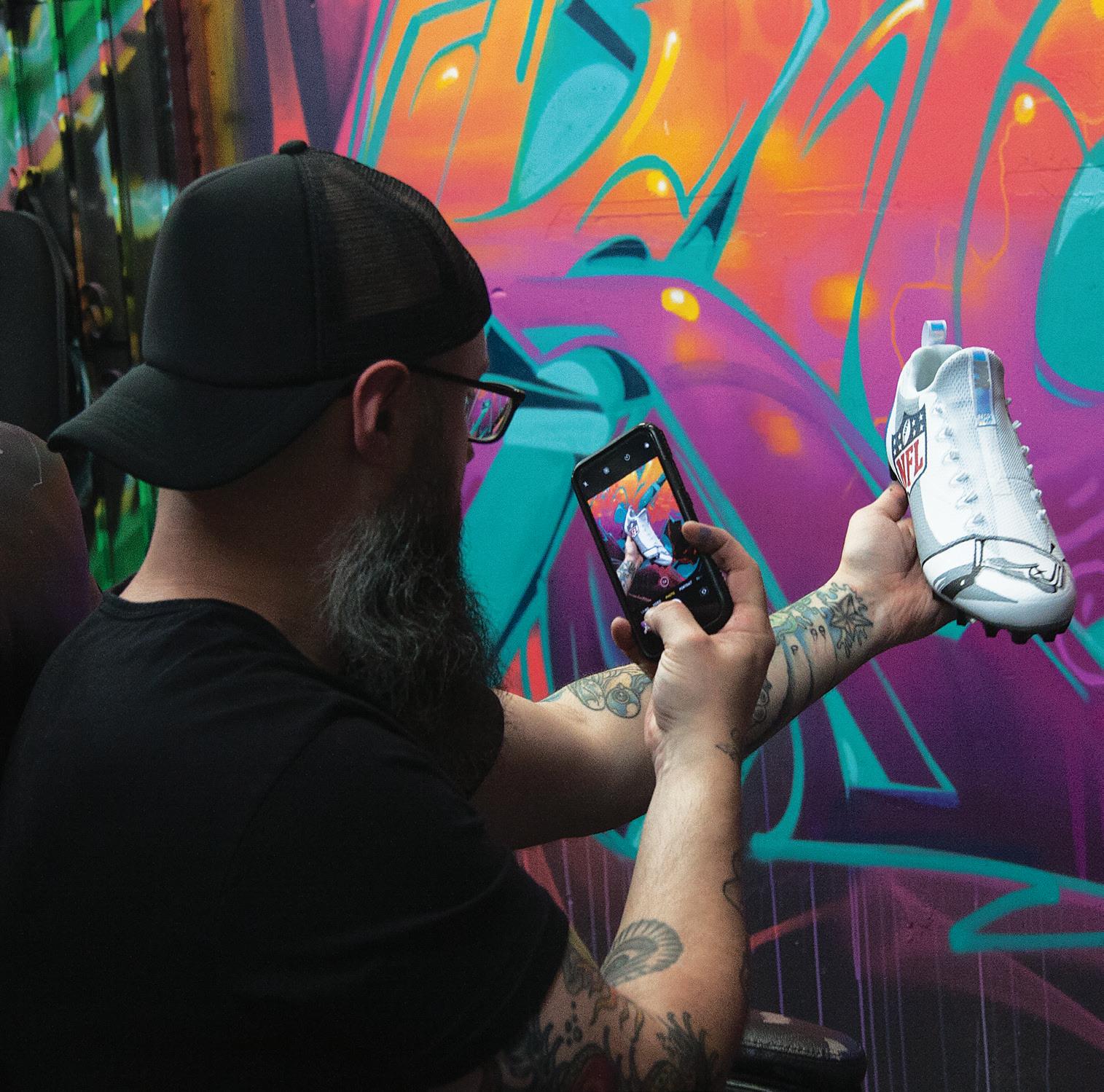
“Instead of using Nike, instead of Adidas and Jordans, why not promote your own brand with your own artwork?” Cole said.
The K_O 1 and future models are not the only movement Cole is making in the business world. He recently opened a shop in the Fashion District of Downtown Los Angeles that features his customs as well as the K_O 1 and other clothing he makes.

Cole plans on expanding the shop, adding a barber and tattoo artist in the near future.
The custom workshop is in the basement, where he employs interns to help and learn at his side. One of these employees is Marco Aguilar.
“Everything I’ve learned, everything I
know I owe to him,” Aguilar said. “Him allowing me to watch him work and see how the process goes, I’m grateful for that.”
With the opportunities that have been afforded Cole in recent years, he knows what the greatest part of his job has been.
“Just being able to do what I love and create is the biggest thing for me. Being
able to work with top athletes in the world is awesome,” Cole said. “Top brands in the world are great to work on but it's just freedom to be able to create.”
B-Grade
noun
Sneakers that did not pass quality control and are sold at a discount
Bred
noun, adjective
Standard black and red color way
DBs
noun
Abbreviation for Doernbechers, the Ohio children’s hospital that has a yearly collaboration with Nike
Deadstock
adjective
Term used for brand new, unworn sneakers
GR noun
Abbreviation for general release, the most abundant of sneaker releases
Grail
noun
A highly sought after shoe. Usually rare
Heat noun
Popular, “cool” shoes
Hypebeast
noun
Someone who wants a shoe simply because of the hype and/or exclusivity surrounding it
Hyperstrike
adjective
Type of limited Nike release
Js noun
Shortened form of Jordans
L noun
Failure to get a shoe on release; a loss
OG
noun, adjective
A pair from a shoe’s original production
On Ice
adjective
A pair that is being kept unworn for a later date
Player Edition (P.E.)
noun
A color way made exclusively for an NBA player. Generally not available to the general public
Retro noun, adjective
A reproduction of an older model
VNDS adjective
"Very Near Deadstock." A term used to describe a pair that has been worn briefly
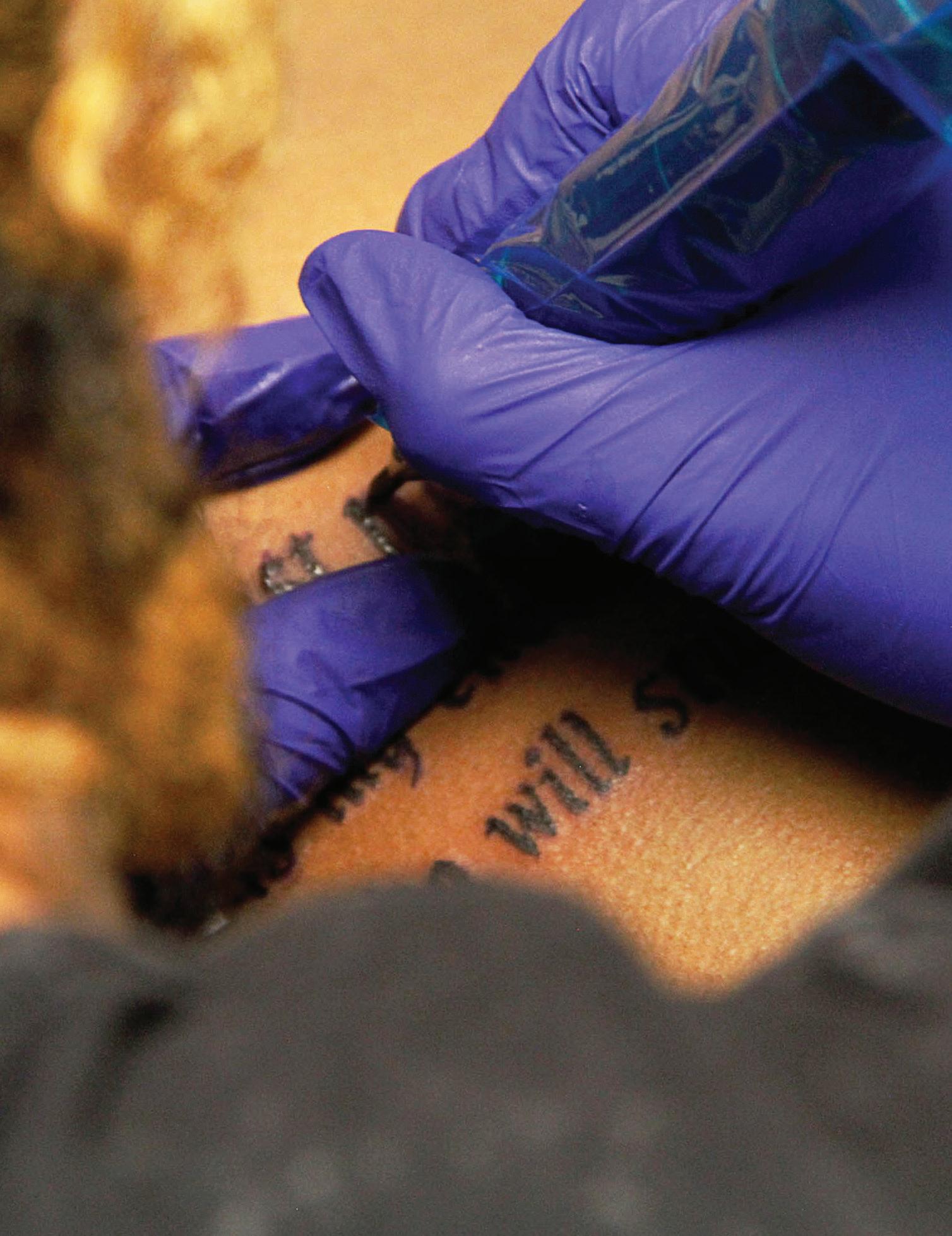
Anew spasm of pain surges through a large man’s body lying on the thick padded hospital style table as a consistent buzz resonates through the room. His face scrunches with each touch of the humming machine to the skin covering his ribs.


A man with blonde and black dreads leans in closer to note the exact spot he should bring the handheld device to next on the visibly nervous man’s rib cage.
The man lying down twists and squeezes
a small rubber ball while he is stuck in a contorted position being scratched and stuck to seal ink into his skin. A crinkled smile crosses his face 90 minutes after he first laid down.


This wasn’t his first tattoo, but as he looked at the finished product on his ribs his eyes smiled a relief that it was complete and he was happy to see the fresh black writing of Psalms 27:2, a verse dedicated to his mother.
Edward “Poncho the artist” Davila wipes an alcohol covered paper towel over the man’s
side as they both admire the end result.
“I feel like I’m able to help someone out, to create a memory for a lifetime,” Poncho said. “I think tattoos are great and I’m grateful to be able to make people happy.”
He didn’t have a real mentor tattoo artist teaching him how to actually ink a person. So he used Youtube to learn.
“So I would say when the whole phase of Lil Wayne and everybody was getting tattoos, I was just like, hey, I’m might as well try it out,” Poncho said. “It was just something

 Edward “Poncho” Davila tattoos the bible verse Psalms 27:2 on the ribcage of his client Cameron Lancaster on April 6, 2018, in Torrance, Calif.
Edward “Poncho” Davila tattoos the bible verse Psalms 27:2 on the ribcage of his client Cameron Lancaster on April 6, 2018, in Torrance, Calif.
that I stumbled upon. One of my friends was actually learning how to tattoo and she was like, ‘Hey, you should try it out.’”
He got his start tattooing in a shop in Long Beach for six months before he felt awkward and wanted something more.
“I was hopping back and forth from trying that out and a garage, and I just took the leap of faith and opened up my own shop,” Poncho said.
He opened his shop “Art is My Drug” five years ago in Torrance, Calif. It’s not only the name of his business, but his mantra.

“It’s my business identity,” Poncho said. “I started that when I opened up the shop and it was the beginning for me.”
Tattooing wasn’t what Poncho saw himself doing. He wanted to play sports, such as football and basketball, but a slew of injuries ripped that dream away, and his hobby of scribbling and sketching cartoons emerged.
“Growing up I was always like, not that I didn’t like tattooing, but I was like man, that’s just tracing, that ain’t drawing, that’s not real art,” Poncho said.
Pierce College adjunct instructor of anthropology Erin Hayes said that tattooing is interesting because it is considered a body modification that can date back at least 5,300 years to Otzi the Iceman.
Hayes said the reasons people get tattoos are probably similar in indigenous countries as well as in the West.
“One of the main reasons people do it is to show membership to a certain group or community,” Hayes said.
In the past, people with darker skin tones got markings that create crocodile style raised bumps on their skin and most other people were tattooed. Hayes said everyone that did it, wanted to show an accomplishment or a remembrance of an occasion, day or person.
Hayes said that the person that gives a tattoo in indigenous communities tend to be considered important and they take great pride in their role.
“People respect them and they go to them,” Hayes said. “They have this long term role. How to give tattoos, especially in indigenous communities, but as well as the West, is a specialized skill.”
Although in parts of the world tattoos have never lost their value or importance, in the West it was frowned upon because it was associated with deviant behavior. But Hayes said recently it has been reclaimed and associated with fashion and the counterculture.
Poncho wanted to help other people hone their craft and develop as tattoo artists, so he began apprenticeships. Chris “Bleach” Thomas, is one of the four people that are learning from and working with Poncho.
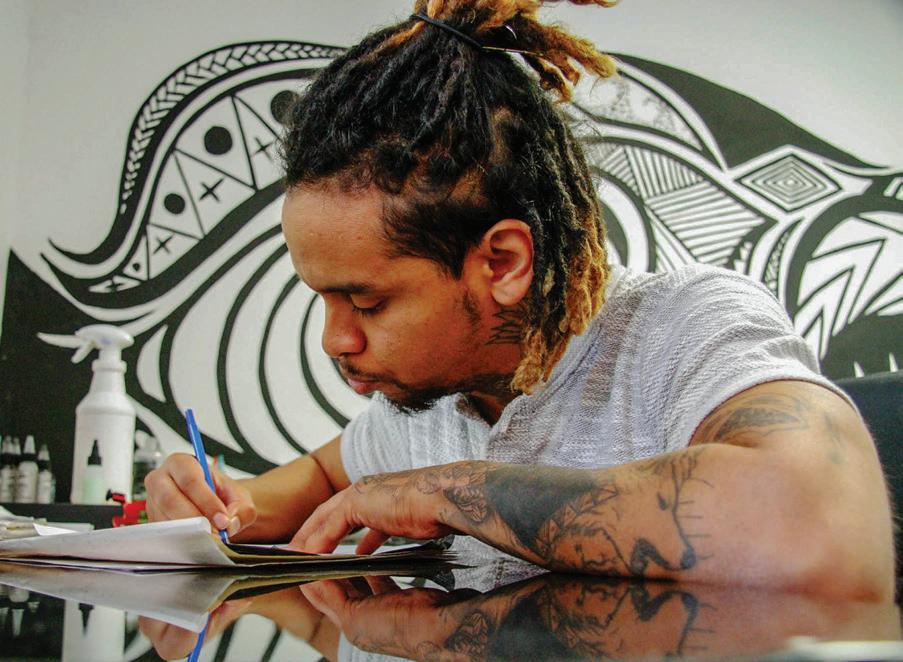

“I was customizing shoes and clothes next door to his shop and he said he was offering an apprenticeship,” Bleach said. “I hopped on it ASAP.”
Bleach said he has learned a lot from Poncho, but one thing stood out more than the rest.
“One of the most important things he taught me so far is to really handle business and take care of business,” Bleach said. “It’s cool to have fun and hang out, but always make sure that I’m being productive and getting something done.”
Bleach said tattooing is about confidence in yourself and your craft. He said it was the right time for him to start and he had the help and resources to do so. He said Poncho is a dreamer and not just an artist.
“He’s the type of guy that’s thinking of how he can take his brand to the next level,” Bleach said. “Always thinking outside the box as far as just changing the game for tattoo artist, or just artists in general.”
Before getting into tattooing, Poncho went to school for graphic design, but quickly figured out it wasn’t what he wanted to do.
“I just felt so confined in front of a computer, I didn’t feel free as far as creating.” Poncho said.
He said it took time to become business minded and still enjoy the little things and not feel overwhelmed, but he is happy where he is now and sees the future brighter.
“I think it just takes time,” Poncho said. “You can’t rush a lot of things, but you can not forget about what you really love to do.”
Poncho stands next to his workspace inside his tattoo shop “Art is my Drug” in Torrance, Calif., on April 26, 2018. Poncho sketches out a tattoo for his client Leone Goodman on April 27, 2018, in his shop in Torrance, Calif. The waiting area inside of Poncho’s “Art is my Drug” tattoo shop in Torrance, Calif. on April 27, 2018. The artwork on the walls was painted by Poncho. It showcases his signature style, mandala.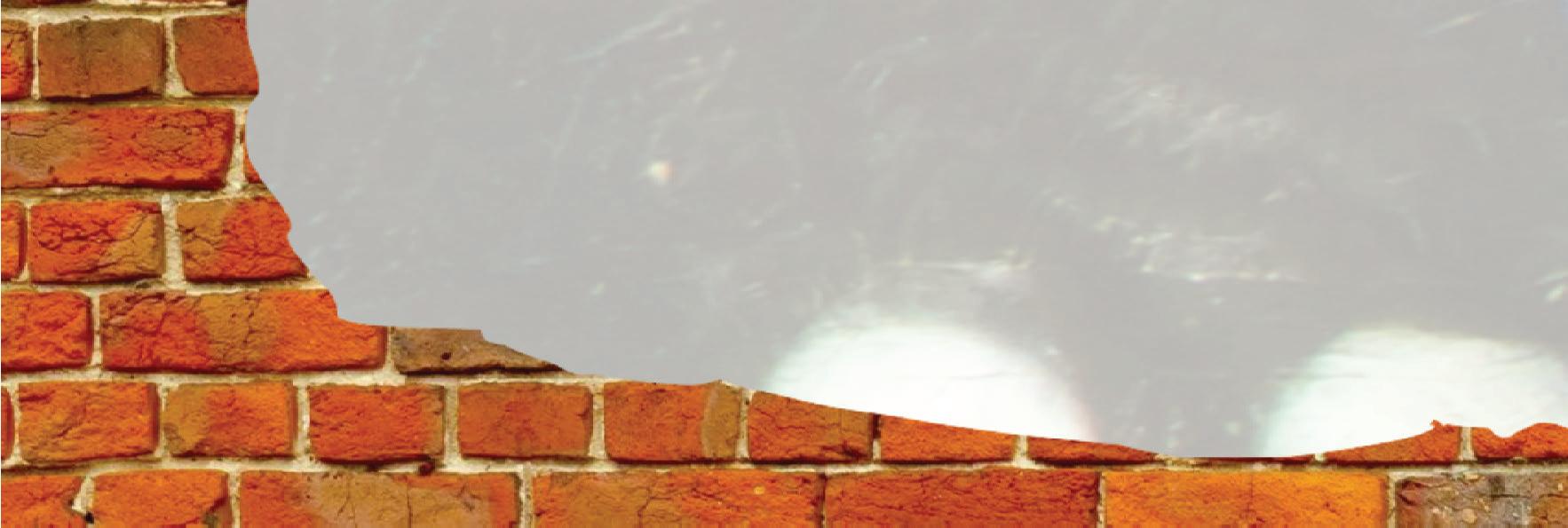
In Los Angeles, it’s difficult to walk a block without seeing it on city walls, across the sides of buses, on billboards stories above. From quick scrawls, to painstakingly crafted murals, graffiti is all around.
But, while some can stop to admire the artistry behind these pieces, others are far less appreciative. The City of Los Angeles spends more than $7 million on graffiti abatement each year, treating the act as a transgression and the works as eyesores to be expunged from the streets.
Still, others seek to ensconce graffiti and offer havens for urban artists to apply their craft without the worry of running afoul of law enforcement and finding themselves in the back of a squad car or seeing their work defaced by abatement programs.
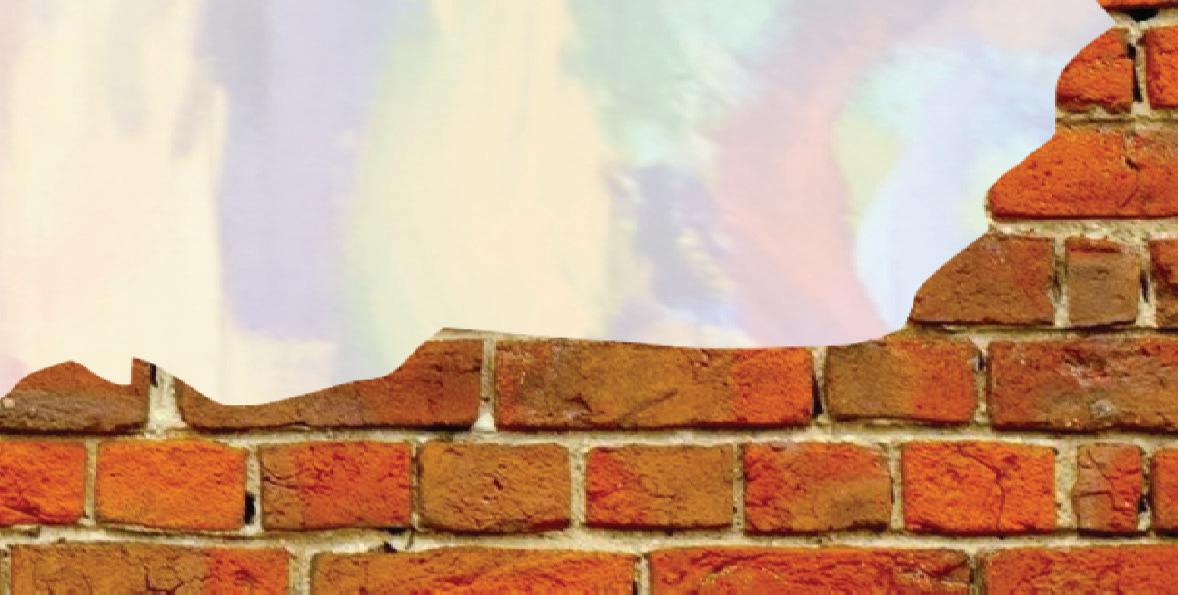
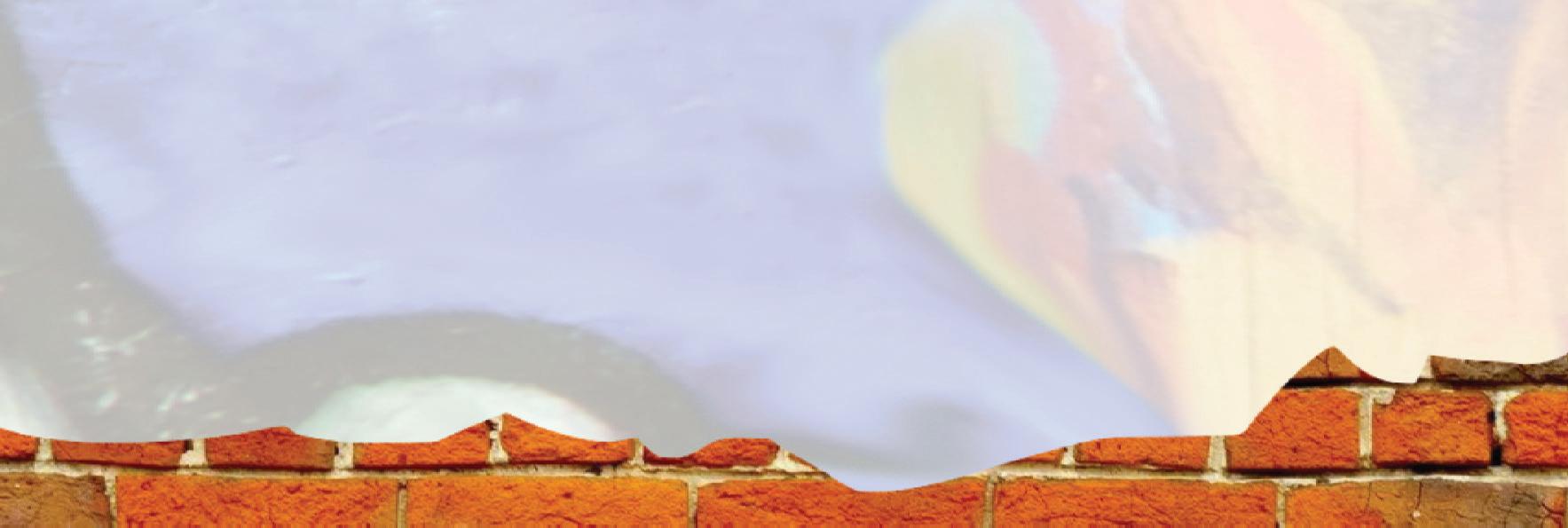

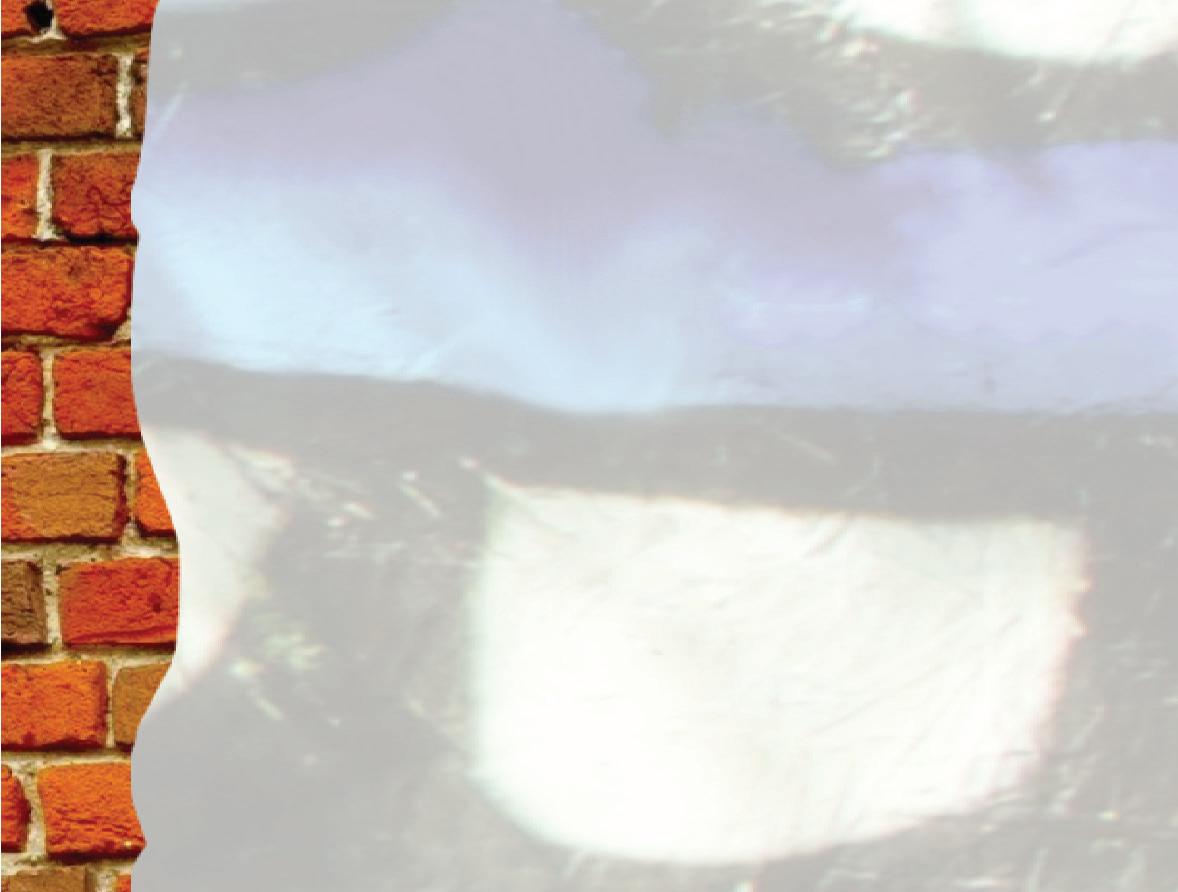

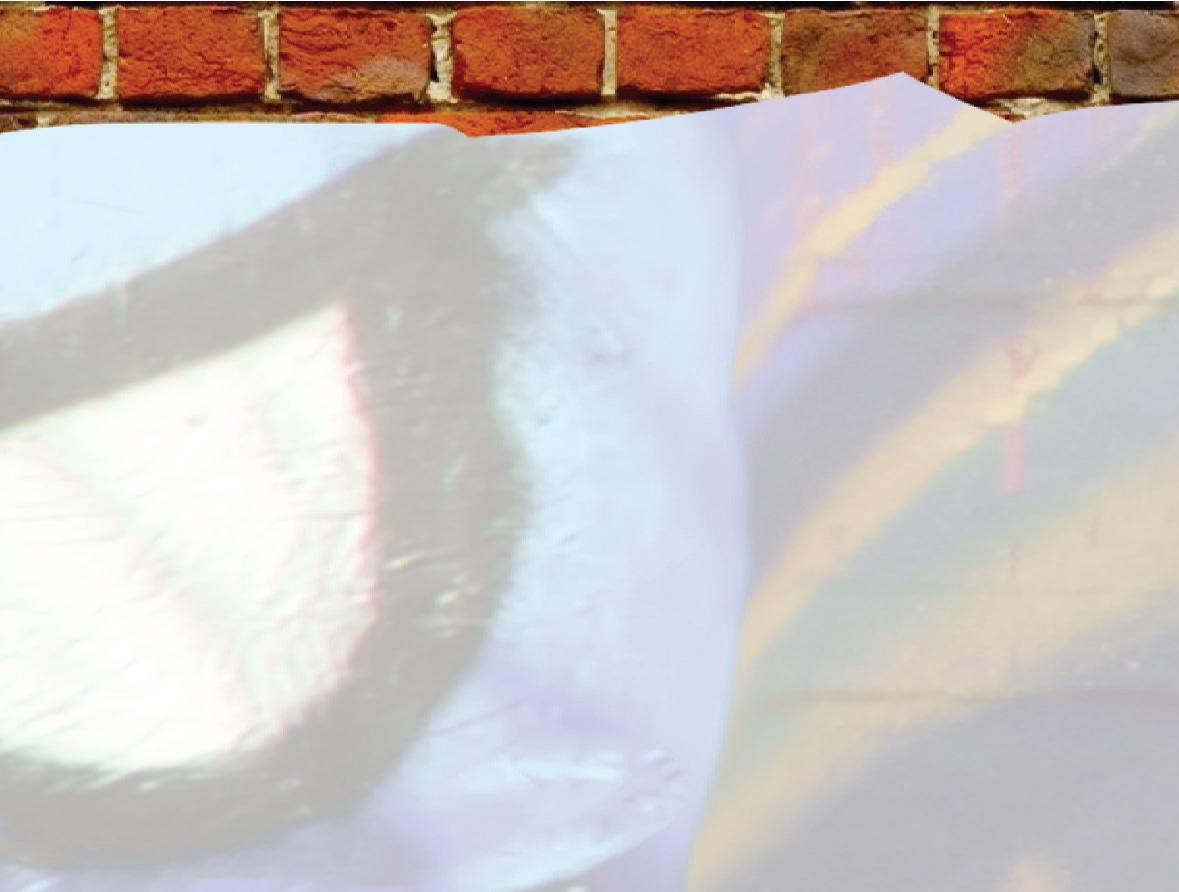
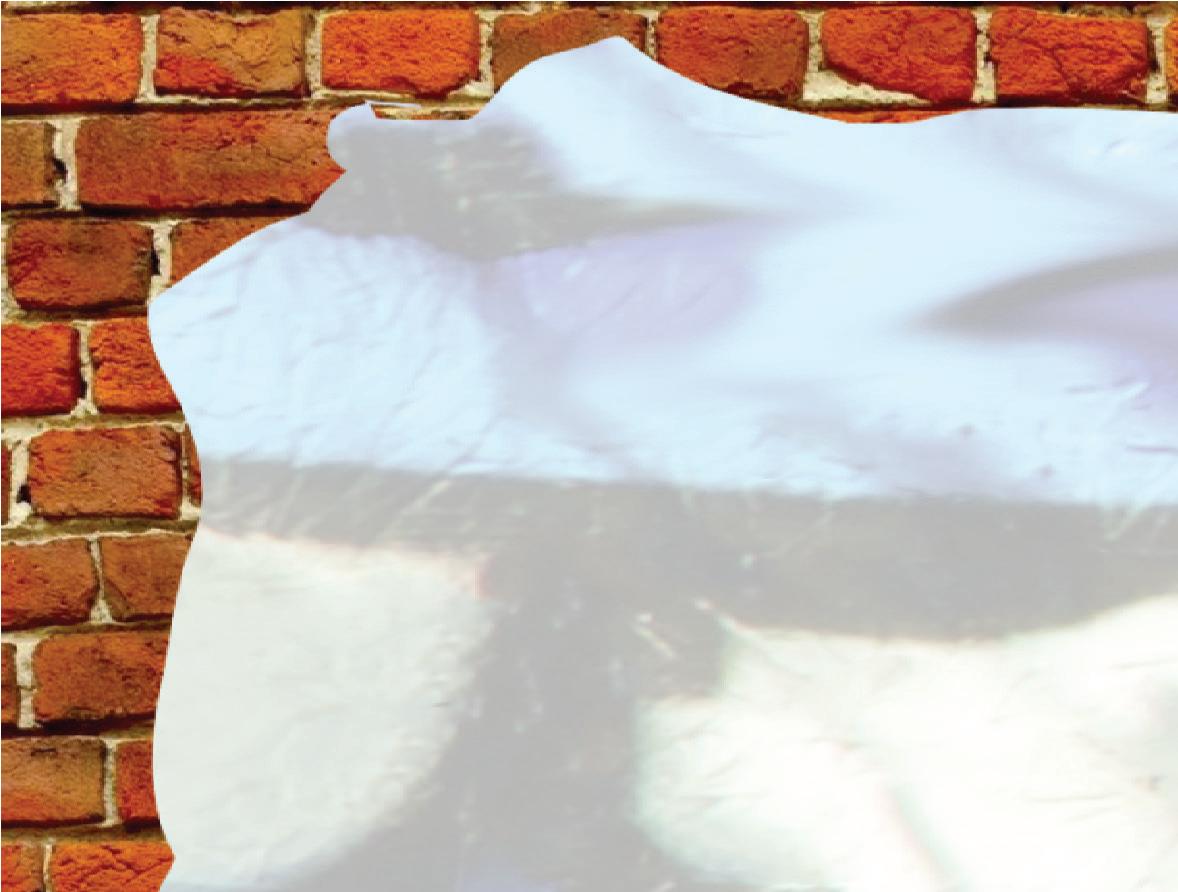
To that end, Off the Wall Graffiti offers the younger generation of street artists an open door, a caring community and blank canvases.
Founded by Maura McCarthy and Paul Nassar, the nonprofit organization aims to take youths practicing graffiti out of the streets and give them a space to safely and constructively express themselves through art.
“There’s a myriad of reasons why a kid might pick up a spray can and decide to do graffiti. It could stem from anger, a desire to be seen or just the need to be creative. It’s more important for us to figure out what they can do with themselves after they pick up that can,” McCarthy said.
McCarthy and Nassar said that Off the Wall was created partly in response to the lack of attention given by society to the underlying issues that often play roles in the illegal and sometimes destructive behavior of
young graffiti artists.
“We already know that when the general population hears the word graffiti they instantly think bad, and they think that every kid who does graffiti is bad. But that’s so not true—they need to give it a second thought,” Nassar said. “When a cop rolls up on a teenager at 3 o’clock in the morning, they need to ask why he’s out so late and why his parents don’t care, not treat him like a criminal.”

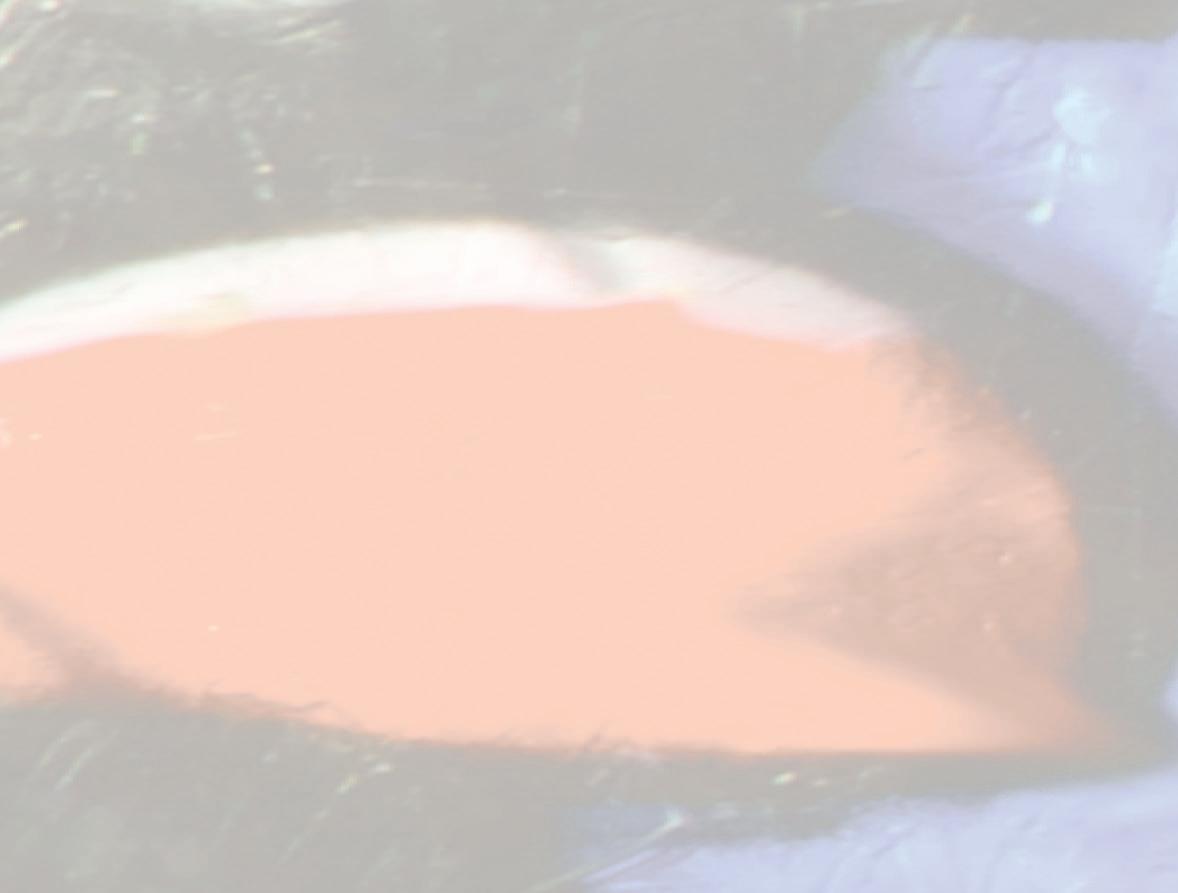
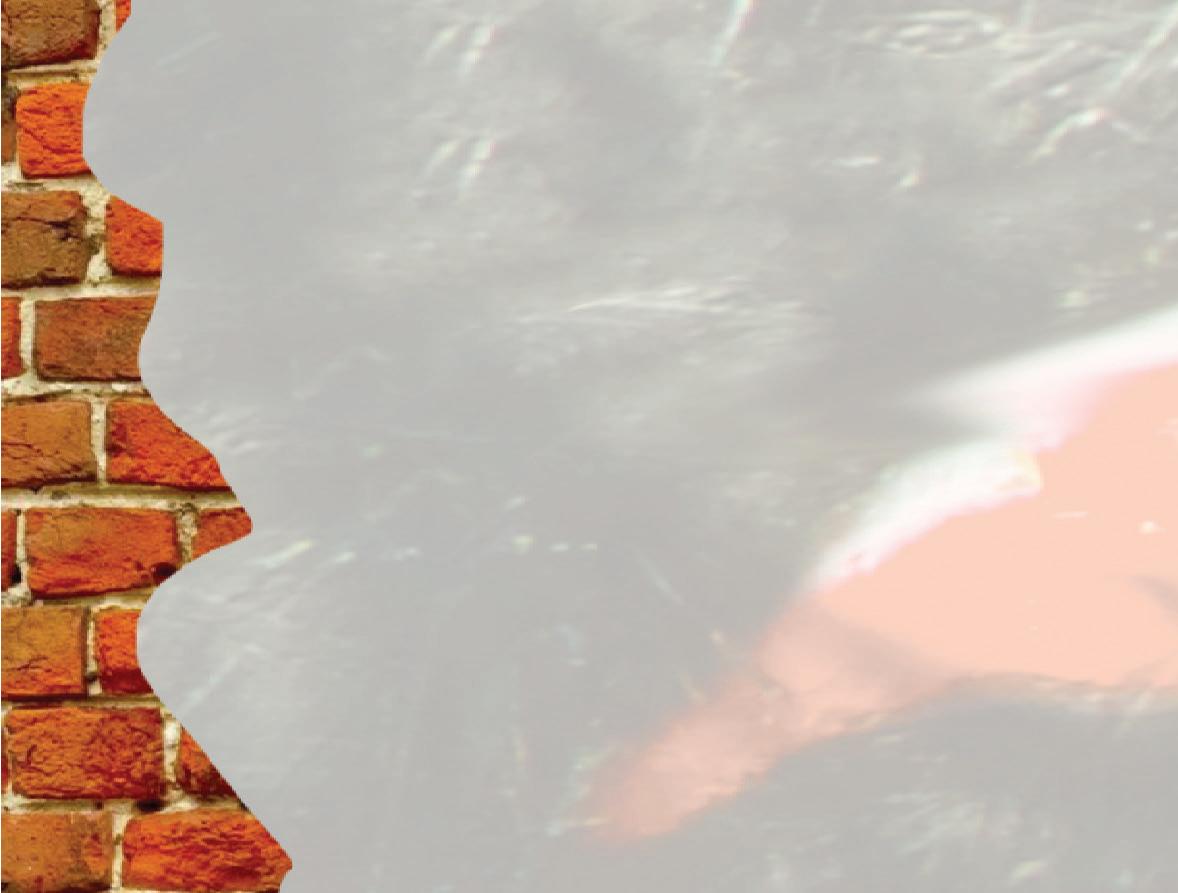
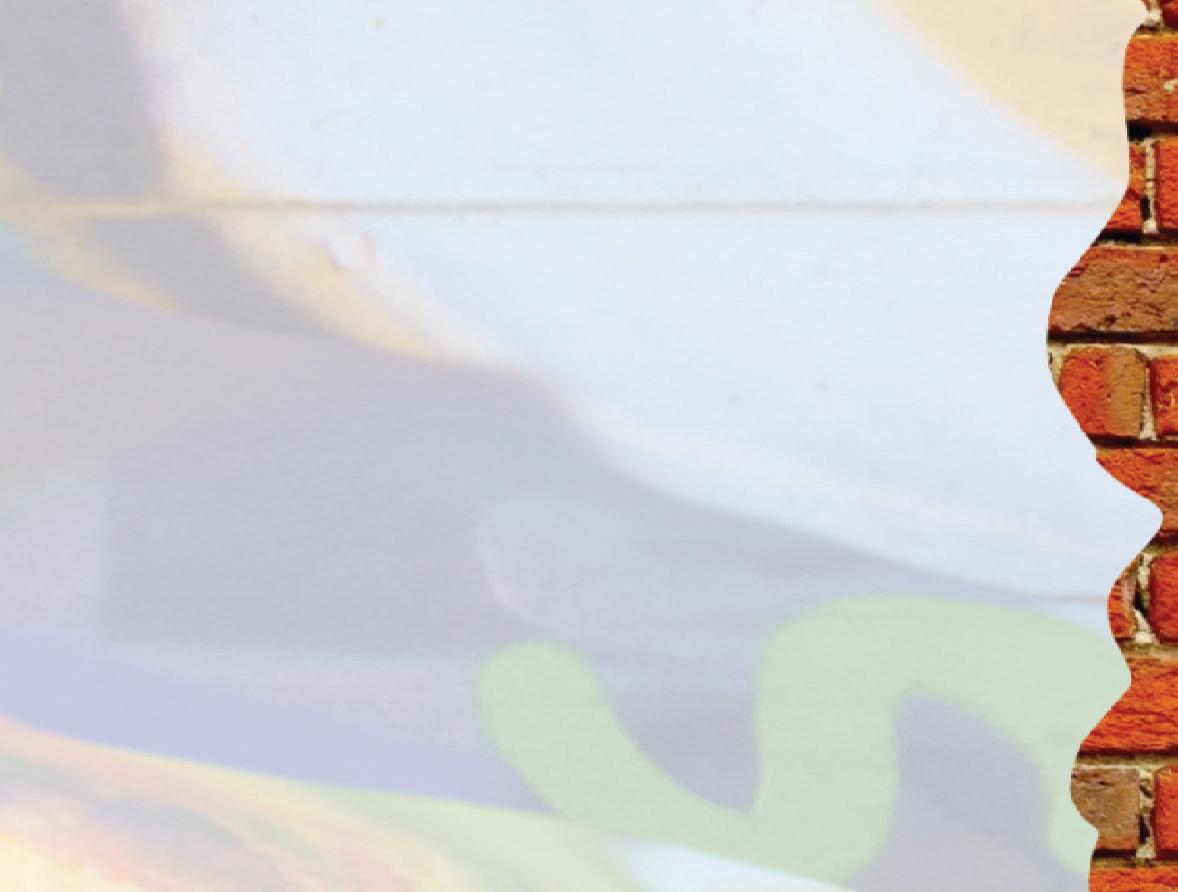

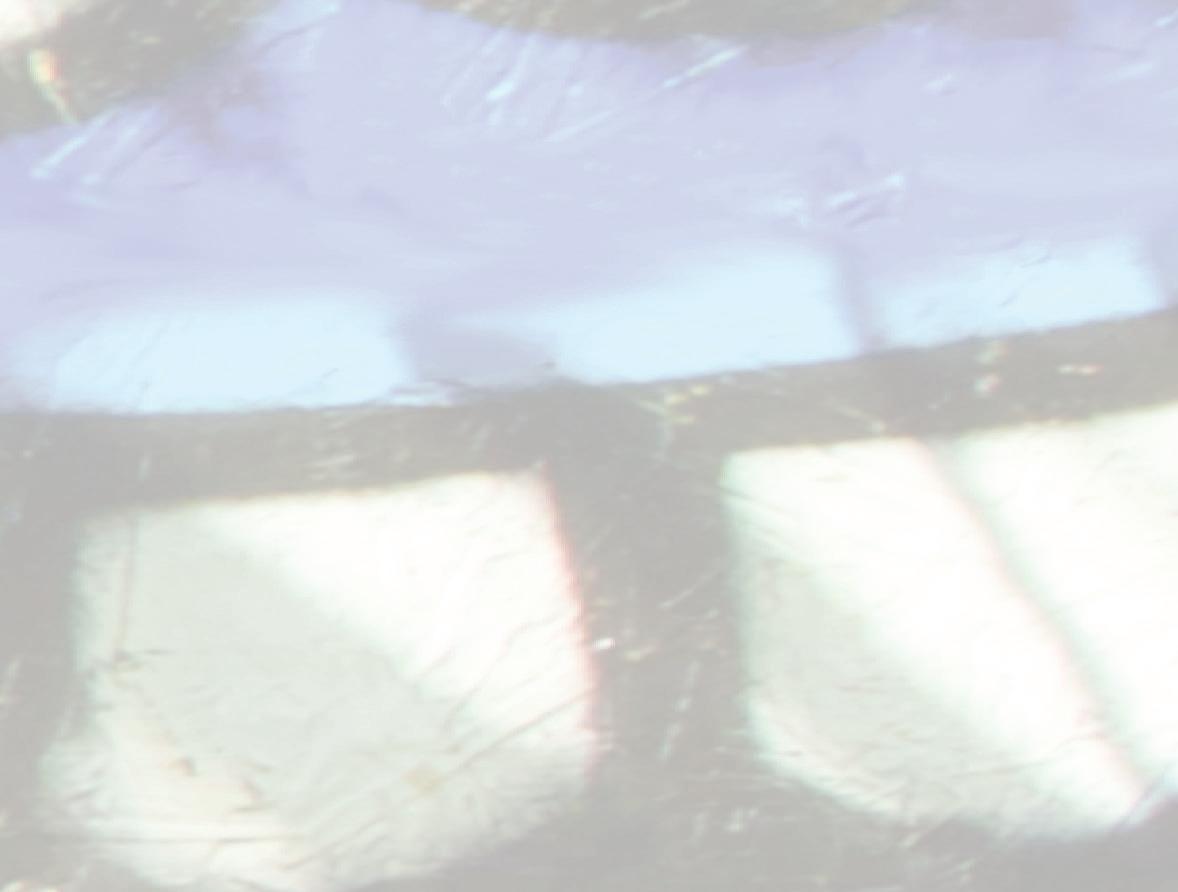
McCarthy said young street artists often come from broken, unsupportive homes and there are few resources available to them.
“A lot of the kids come from very stressful situations, and the school systems don’t really have a lot to offer them,” McCarthy said. “There’s not much counseling for kids who, for example, have had their parents deported and have to be raised by their older siblings, or who are sitting in class with empty stomachs. Graffiti offers them a sort of escape.”
However, according to McCarthy, the distraction offered by graffiti is often destructive. She said that young artists often pursue their craft because of the thrill that comes with performing a transgressive or possibly dangerous act.
“There’s an adrenaline rush that they get when they’re in the street that teenaged minds need. They need to be risk-takers, so they equate that good feeling that comes with the rush of running from the police with something positive,” McCarthy said. “The sad thing is that this is one of the only mediums where that big risk follows them when they go out and practice. There’s always that risk of jail time or
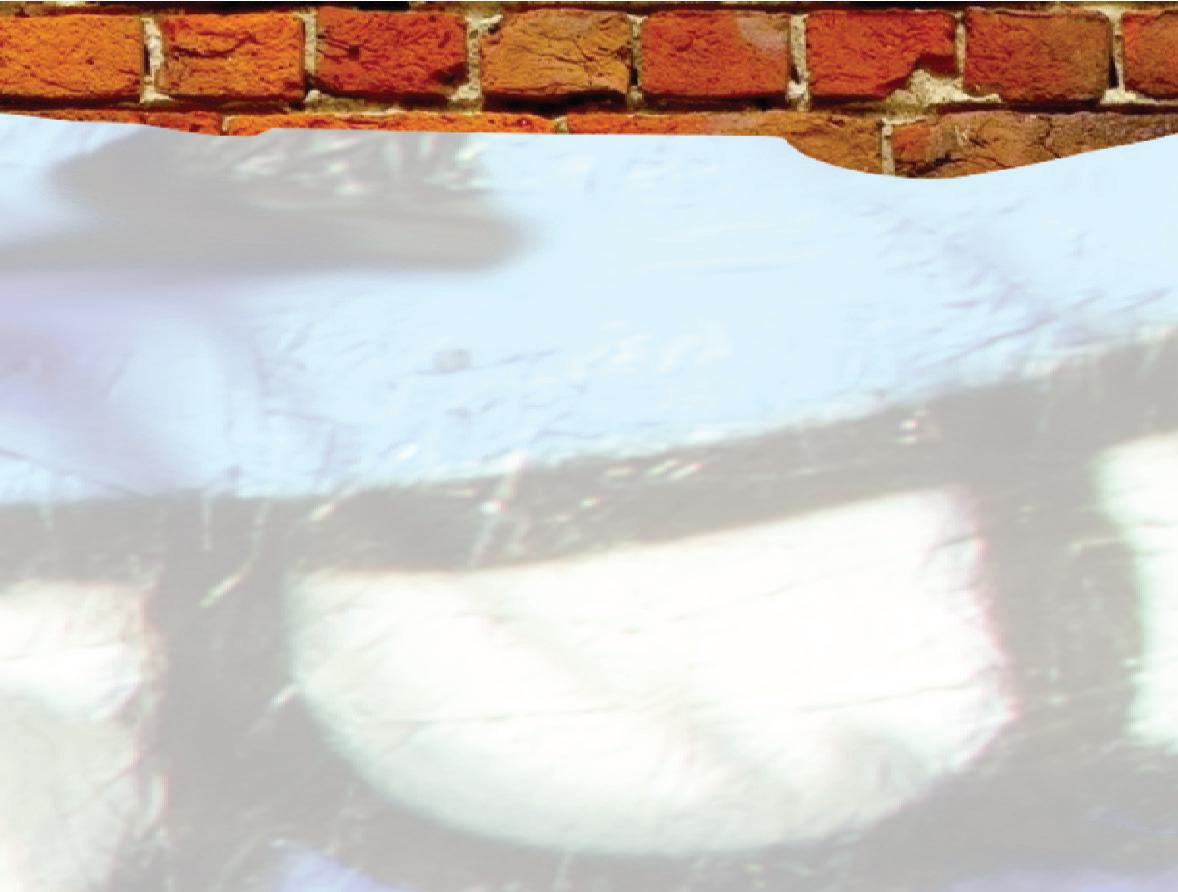
even death, so they kind of sell their souls for graffiti.”
She said that one of Off the Wall’s goals is to transfer the thrill that youths receive from the illegal and dangerous aspects of graffiti to more constructive acts of painting. The organization offers space for young artists to create art in the company of others and holds them to higher standards than what they might be used to.
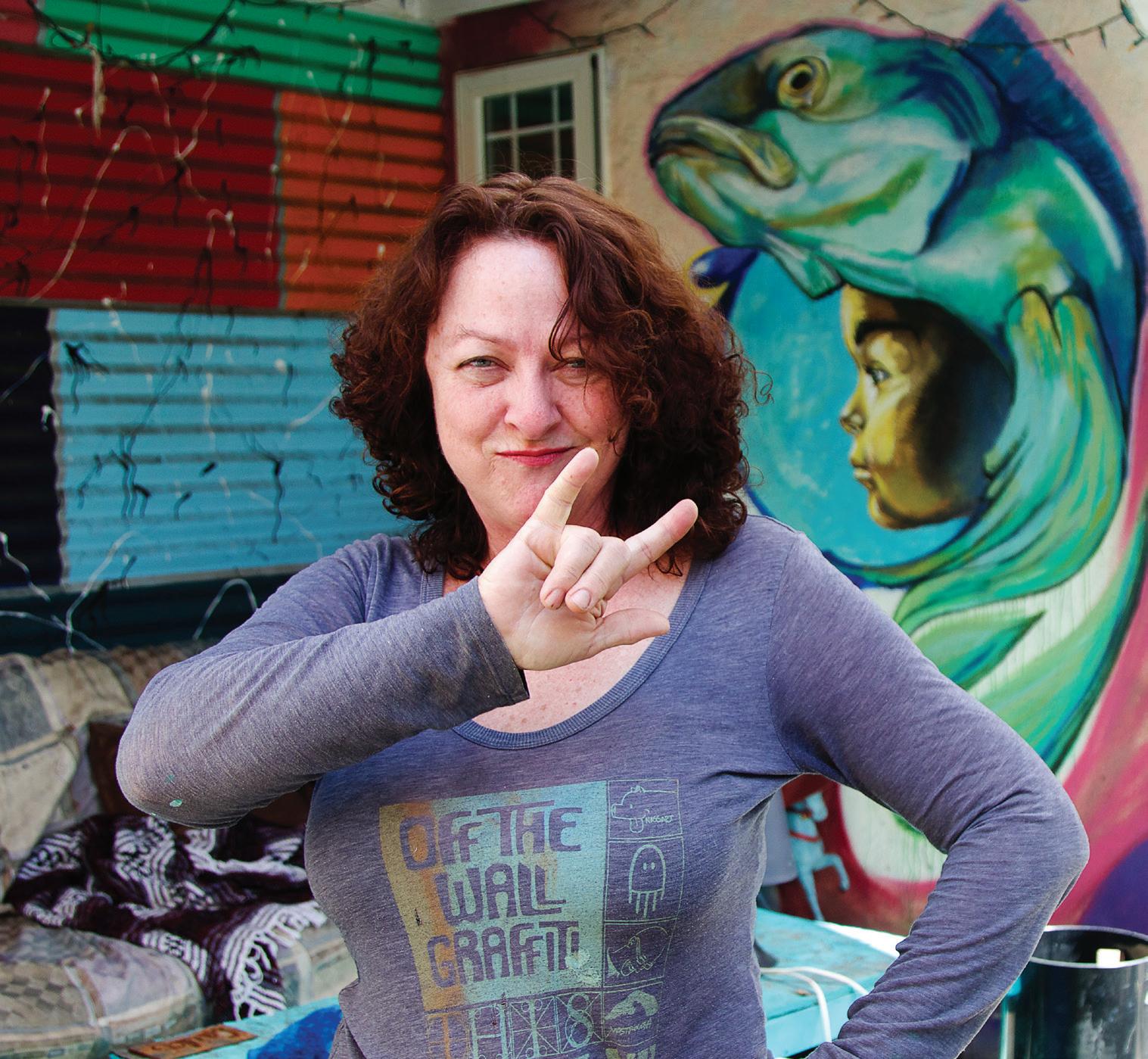
“In the streets, nobody requires them to go beyond tagging their name on a billboard or an overpass. We say, ‘Okay, try painting live in front of someone and risk being seen practicing.’ We tell them to watch their racing chest and see that it’s the same feeling of doing something illegal or dangerous,” McCarthy said.
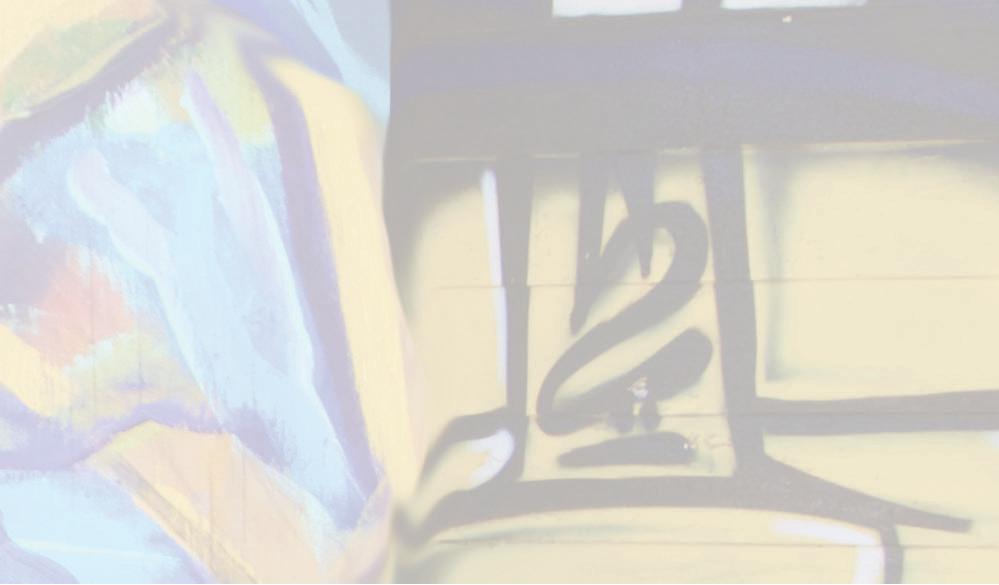

Nassar said that even something as simple as having customers who buy their art can serve as an incredible thrill to young artists coming off the streets.
“So many of the kids that we have coming through here and painting for an audience end up seeing that the feeling of selling their first print or canvas is the same feeling they get when they throw a piece up on a wall and think, ‘Holy crap, I can’t believe I got away with that,’” Nassar
said. “We want them to look at themselves and realize that they’re actually good at what they do. They don’t have to put themselves in dangerous positions to get what they want out of art.”
In addition to offering young artists a safe, constructive environment to create their art, Off the Wall also seeks to teach the significance of art in the modern day. The organization works in close cooperation with continuation schools to offer after school programs and curriculums that impart the value of art to students.
“One of the things some of these kids struggle with is completing projects. So we’ve created this curriculum called M2ART, which acts as an after school program where they can go through lessons on subjects like fine art and art history,” McCarthy said.
McCarthy said that the M2ART curriculum also teaches artists how to compose a small sketch and challenges them to transform their concepts into larger pieces of art using spray or bucket paints within a certain time limit.

According to McCarthy, the curriculum also is being implemented as an approved high school class that brings the concepts
fine art and design to students and satisfies a required fine art credit.
Destiny Griesgraber, a Los Angeles Pierce College student and artist who has participated in Off the Wall, said she first became aware of the organization during the Reseda Rising Artwalk in 2017. She said that she was live painting at a booth near to where Off the Wall had setup, and attracted the organization’s attention with her work.
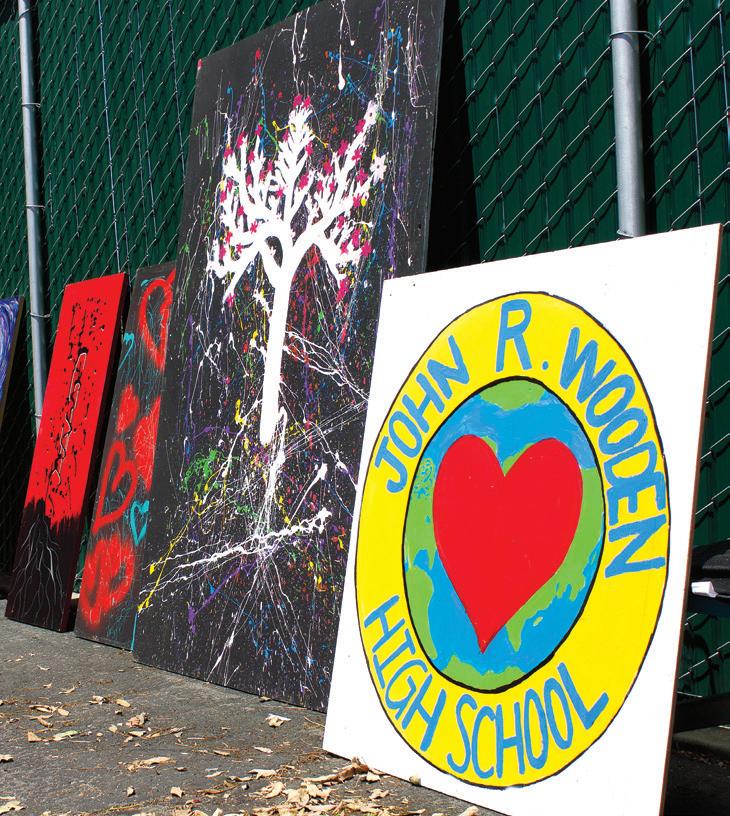
“I caught Maura’s eye, and we had a sort of powwow there on the sidewalk for a good hour or two. She told me about what Off the Wall had to offer, and it just seemed like an amazing resource both for myself and the art community,” Griesgraber said. “It’s turning out these artists into the world to better their community, and it’s doing it in a smart, efficient way.”
Griesgraber said that chiefest among the amenities offered to artists by Off the Wall is space and equipment to create.
“In LA, you’re usually allocated a tiny apartment. You don’t have a lot of room available, and it costs money to rent a studio. At Off the Wall, you have all these tools and land to make use of,” Griesgraber said. “Because of all that, I’ve made some art that I needed to make that I know, for sure, I could not have without this place.”
Griesgraber said that Off the Wall has imparted to her professional skills as well, such portfolio building and resume writing.
Brenda Young, an instructor at John R. Wooden High School, said Off the Wall’s efforts have resulted in increased student attendance and collaboration.
“Because of Off the Wall’s programs, students are sometimes thrown together
Maura McCarthy, co-founder of Off the Wall, poses at Off the Wall Graffiti in Sherman Oaks, Calif., on Friday, March 30, 2018. Photo by Brian Caldera Student art on display at John R. Wooden High School in Reseda, Calif., on Friday, April 20, 2018. Photo by Andrew Fortin-Calderain the process of creating art. I’ve seen students working together that probably wouldn’t otherwise,” Young said.

Young said that the projects presented to students by Off the Wall offer opportunities for growth that may have been made unavailable to them by a normal school systems.
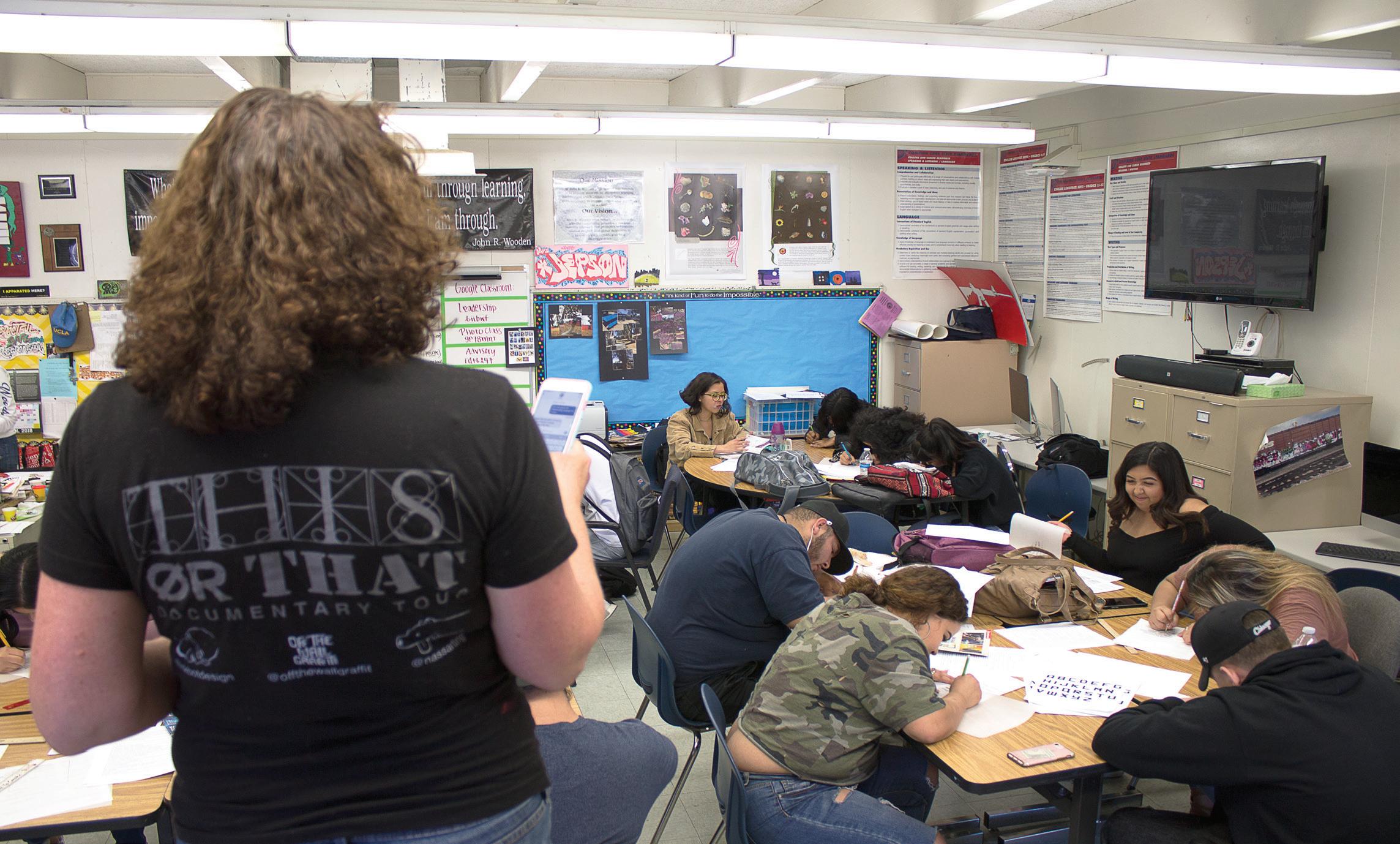
“Some students are very creative, and the traditional school setting may not have nurtured that because of how it is set up,” Young said. “Off the Wall gives these students the chance to express themselves, gain a sense of self-importance and evolve their skills by teaching them how to come up with a concept and transfer that idea into something tangible.”
McCarthy said that, regardless of how society chooses to view graffiti—as a transgression or otherwise—the art form is here to stay.
“There needs to be an acknowledgment that this is a medium that isn’t leaving. People have tried to abate it and cover it and slap it down, but it’s not going anywhere,” McCarthy said. “What we’re doing is a megaphone cry to shift the thinking around graffiti as an art form. It’ll probably never leave the streets, but it’s still something to be embraced.”
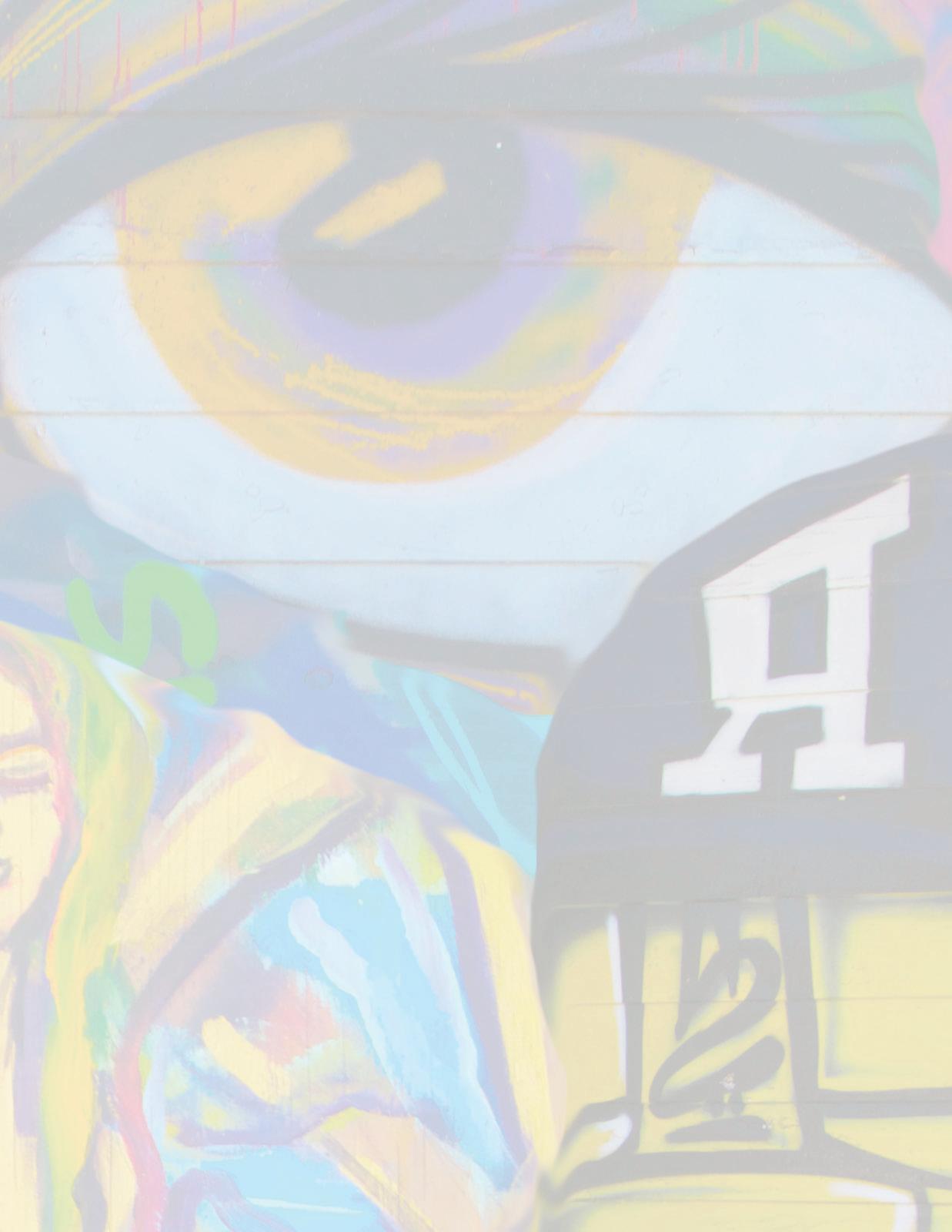 Brian Gutierrez and Alissa Avilla paint on a canvas at John R. Wooden High School in Reseda, Calif., on Friday, April 20, 2018.
Photo by Andrew Fortin-Caldera
Co-founder of Off the Wall Maura McCarthy oversees students as they learn about the significance of typography at John R. Wooden High School in Reseda, Calif., on Friday, April 20, 2018. Photo by Andrew Fortin-Caldera
Brian Gutierrez and Alissa Avilla paint on a canvas at John R. Wooden High School in Reseda, Calif., on Friday, April 20, 2018.
Photo by Andrew Fortin-Caldera
Co-founder of Off the Wall Maura McCarthy oversees students as they learn about the significance of typography at John R. Wooden High School in Reseda, Calif., on Friday, April 20, 2018. Photo by Andrew Fortin-Caldera
Art exhibits are usually predictable. Canvases on white walls with spectators conversing, giving their opinions and perceptions.
Every second Thursday, the streets of downtown Los Angeles offer a different take.
The Downtown Art Walk is a self-guided exhibit through the streets filled with art vendors and art of downtown LA.

Qathryn Brehm, the director of the Art Walk, describes it as diverse.
“We are a nonprofit that tries to celebrate Los Angeles’ various ethnicities, socioeconomic statuses and religions with each walk,” Brehm said. “It depends per month on what’s going on in the Los Angeles and the world.”
Brehm said the art walk helps artists showcase their work and find opportunities.
“A lot of what we do is try to help them throughout their careers and find them opportunities,” Behrm said.
The art walk on March 8, 2018, featured
two neon artists, Michael Fletcher and Linda Sue Price.
Price has been a neon artist for 14 years and describes her art as free form.


“When I finish heating the glass I bend it in the air as I dance,” Price said. “Traditional artists bend a pattern on a table.”
Price said she takes influence from her environment.
“My art is more about civility, race and sociopolitical matters,” Price said. “I like using nature as well, such as trees and flowers.”
Fletcher said he’s been doing neon art for 35 years and primarily uses patterns.

“Neon started as a way to advertise, so I try to use text at times to be clever,” Fletcher said.





Fletcher said he sometimes has to search for the meaning and inspiration in his art.
“I don’t always know what my pieces are about,” Fletcher said. “Sometimes I have the idea already and then make the piece, other times the meaning comes to me after the piece is drawn.”
TOP PAGE: “Sequoia” by Linda Sue Price on display in the Fine Arts Building at the Downtown Art Walk in Los Angeles, Calif., on March 8. 2018. ABOVE: Onlookers check out some of the booths and food trucks at the Downtown Art Walk in Los Angeles, Calif., on March 8, 2018. RIGHT MIDDLE: Michael Flechter holds his piece “Flash Camera” in the Fine Arts Building during the Downtown Art Walk in Los Angeles, Calif., on March 8, 2018. RIGHT BOTTOM: Michael Fletcher’s “If the Shoe Fits” on display at the Downtown Art Walk in Los Angeles, Calif., on March 8, 2018. Story by David Zayer Photos by Martin Moran Art walk gives artists exposure and spectators a different experience MegZany stands in front of a piece she painted on a Melrose Avenue storefront from on top of a ladder in Los Angeles, Calif., on April 6, 2018.
MegZany stands in front of a piece she painted on a Melrose Avenue storefront from on top of a ladder in Los Angeles, Calif., on April 6, 2018.
A7-year-old stuck at a railroad crossing stands along a stretch of metal tracks that extend as far as the eye can see.
A swiftly approaching train of 70plus graffiti-cloaked cars—painted with culture and history—flies by the face of a child, offering her first glimpse into the world of street art.
The impression that blossomed at the train tracks stayed with her, and as she grew into adulthood, she found herself at a crossroads.
She needed to decide between a lucrative day job or risk stability to follow a 7-year-old's dream.
She chose the latter.
Known to the public as MegZany, the distinguished Los Angeles street artist with fiery pink hair and everpresent spray can in hand, has distinctive installations and murals that relay messages of feminism and equality around the globe.
With every spritz of paint onto a stencil, she crafted art in a quaint corner of a posh Melrose Avenue storefront during a recent mission, as pedestrians stole a glance or two at the paint-splattered, denim wearing, street artist formulating art from the top of a ladder.

“It’s cathartic for me. So when I’m actually putting the can to stencil, that’s something I get to leave behind,” MegZany said. “Even if 500 people walk by it, but only one person saw it and ended up loving it and it did something for them. That’s the amazing part.”
Before taking her art to the streets, MegZany worked as a corporate recruiter for Fortune 500 companies. She even started a recruiting business. She was in the industry for eight years.
“I was there for 14-hour days helping someone else build their dream and it was something that I was passionate about, but it just really struck a nerve. I wanted to do something for me,” MegZany said. “I really hit rock bottom and then I started soul searching. I want to do something that I can be batshit crazy about. And so everything just pointed me down the path of street art.”
MegZany is best known for her “Courage Has No Gender” campaign. She features the faces of those that diverge from gender norms and pave the way for a generation that fosters courage and inclusion.
“Courage Has No Gender” was started while working in the corporate world. MegZany’s obstacles as a woman in the corporate world led her to question her calling.
“I started because I was feeling the doors were just closing in my face because I was a woman trying to build my own business. And so I had written on a postit note, ‘Courage Has No Gender,’ just so that I could give myself that push to continue to be grateful for, but also to just have that fire inside me to keep going. And it was like a couple months in from me doing street art, and I was like, ‘Oh yeah, that message that I
 MegZany puts up pieces of art through the process of “wheat pasting” in the streets of Los Angeles, Calif., on Feb. 18, 2018.
Photo by Natalie Miranda
MegZany puts up pieces of art through the process of “wheat pasting” in the streets of Los Angeles, Calif., on Feb. 18, 2018.
Photo by Natalie Miranda
wrote for myself, I really need to share that and I needed to get that out,’” MegZany said.
MegZany said gender shouldn’t hinder one’s success.


“People say that I’m the feminist street artist and I’ll take it. I mean, I’m fighting for women and fighting for equality,” she said.“ I want everyone to have the same jumping off point, and then what you do with it from there is your choice. But we should all be in the same start line together.”
Lizy Dastin, a UCLA and SMCC art history professor specializing in contemporary and urban practices, said MegZany’s message of gender equality is political.

“Meg is a lot more self consciously feminist in her agenda and not a lot of artists that I’m familiar with have that kind of politicized message of gender equality,” Dastin said. “She puts a spin of positivity on that and she definitely has that political agenda, but then it’s couched between ultimately seeking the positive.”
MegZany said a key to her success is living without apprehension.
“Nothing has been handed to me. The highs and lows of being an artist are real, but I pick myself up all the time. There is no such thing as having a bad day in my eyes. It’s like going through and figuring out what is great and what I am grateful for,” MegZany said. “I wouldn’t do anything different. I think all the events that have happened in my life got me to where I am today, but I think a lot of that is seizing every fucking moment, every door that opens, throwing yourself through it and that’s how you live with no regrets.”
Collin Salazar, a street artist, said MegZany has a strong work ethic.
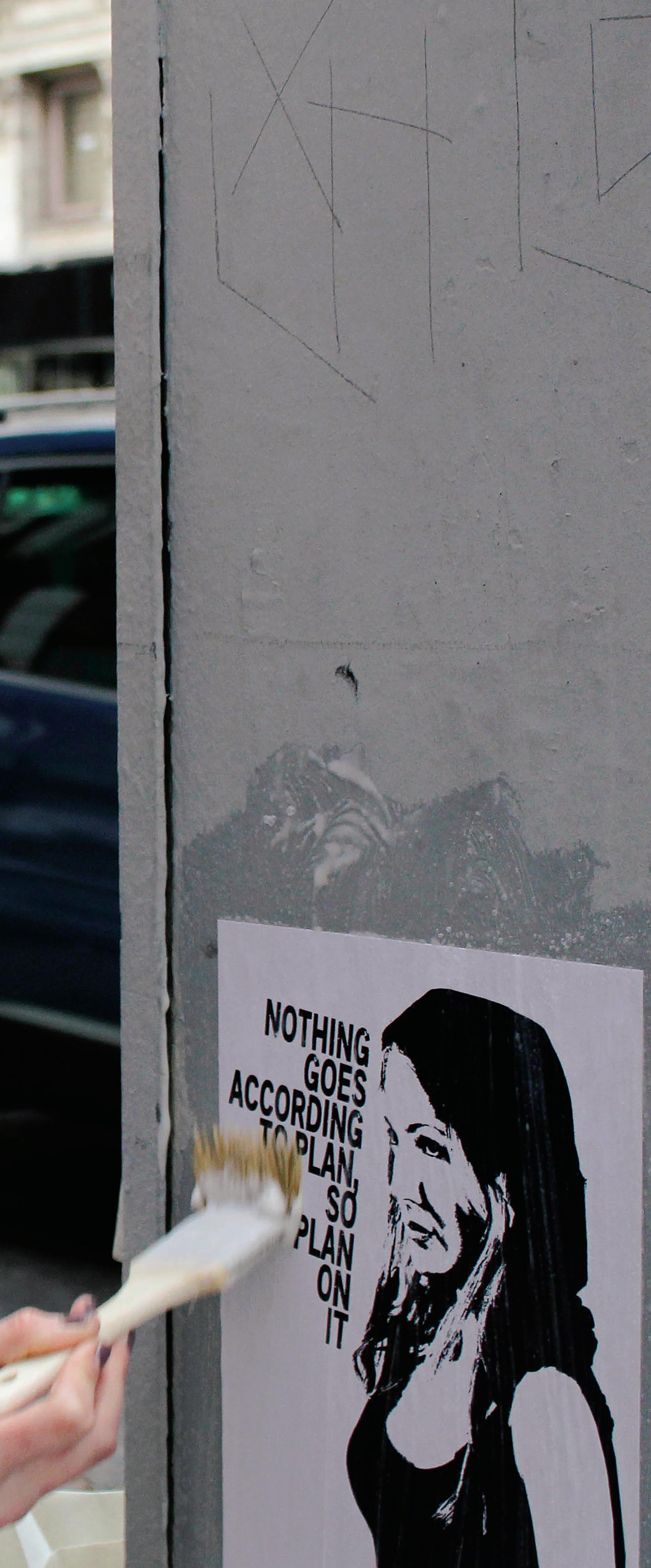
“She is going at it and working hard and not letting anything stop her. I think that’s amazing in itself and her work reflects that. It’s such a positive, forward pushing message for the feminist movement or empowering anyone, no matter who you are,” Salazar said.
MegZany’s first campaign feature for “Courage Has No Gender” was Amelia Earhart.
“I have an obsession with flight and obsession with her story and background. She was into fashion, she did all these things and then just hopped in a plane and was like, ‘This is it. Here I go,’ and I find that incredibly inspiring,” she said.
Some other courageous figures she has celebrated include Malala Yousufzai, Jane Goodall, RuPaul, Laverne Cox, Serena Williams, Ellen Degeneres, Taylor Swift, Danica Patrick, Rain Dove, Shane Ortega and Becca Longo.
MegZany said she plans to continue the project.
“ I don’t want the ‘Courage Has No Gender’ campaign to go away only because I want to evolve it and continue to celebrate people,” MegZany said.
Dastin said she admires the diversity within MegZany’s passion project.
“I love that she includes women of color and trans women. So it is a more comprehensive approach to appreciating and understanding gender, especially since we are in a time of gender intersectionality. I think that her ‘Courage Has No Gender’ aligns well with that,” Dastin said.
One of MegZany’s distinctive pieces is her interpretation of the Strawberry Shortcake cartoon. She has transformed this childhood character, combined with playful phrases, into a symbol for feminism and empowerment.
It’s cathartic for me. So when I’m actually putting the can to stencil, that’s something I get to leave behind
-MegZany
MegZany said she began painting Strawberry Shortcake to return to a nostalgic childhood message of clarity.
“Strawberry Shortcake really was kind of like, ‘How do we get back to our roots?’ You know, when we were kids we would sit down in front of the TV and the messages that we would receive from cartoons was so clear cut,” MegZany said. “We need to really just get back to like, as you adult – here’s an adult message, fuck social norms, do want you want, and don’t be a dick.”
MegZany said she views Strawberry Shortcake as being an influential figure.
“Strawberry Shortcake is badass. Like if she was here in 2018, I think she would morph into something cool. And I think that there’s a lot to be celebrated with her too. I want to imagine that she is a badass feminist and is kicking ass with what she has, and if she’s making strawberry jam, she’s like rolling in the riches for it and she’s celebrated in that light,” MegZany said.
Although the perspective of street art is mixed, MegZany believes it is more than just paint on walls.
“I could see how people would say that self-sanctioned art is vandalism, however, I really believe in what I’m doing and what I’m saying and what I’m putting out there,” she said. “So in terms of vandalism, I would say it’s enriching the neighborhood. It’s enriching the building and people that are coming in the city,” MegZany said.
MegZany said she is conscious about the legality aspect of street art, however she perceives it as breathing life into a city.

“Protection of personal property
is something that I think about, but it’s also enriching personal property. If I’m able to enrich someone’s personal property, I think that’s a win,” MegZany said. “It really transforms a neighborhood. It brings culture, it brings excitement, it brings color and it brings life.”
MegZany said she often finds herself drawn to walls that unexpectedly strike inspiration.
“It’s such a weird feeling when you’re walking along and then something catches your eye and you’re just like, ‘Oh yeah, I can see my art on this.’ I don’t know if it’s a six sense, because that’s just kind of weird, but it’s definitely a connection that you get with a wall and you’re just like ‘This is mine now,’” she said.
MegZany said when she is out on the street making art she sometimes fears repercussion, but the creation and completion of each piece is a act of self expression.
“If I’m out there doing something renegade, it’s like ‘Don’t get caught. I’m not prepared for this,’ but a lot of it is a celebration. I just get so excited to leave art. I’ve created something and I’ve sat there and through creating it on my
computer, then going through and making the stencil of it. That’s where I spend that time,” MegZany said.
MegZany said when she creative blocks can be challenging, but staying creative gets her through.
“I mean there were of course a lot of blocks, but it’s just being persistent and continuing to do what you want to do. You just overcome them,” MegZany said. “Sometimes when I’m working on other projects, something else will come, which is why I often have to work on like three or four things at once, because things are always progressing in my subconscious.”
MegZany said that intellectual property is crucial within the community and putting her all into creating something becomes an extension of herself.
“Artists are definitely the ones that are truly living the life anytime they’re creating something that comes from deep inside,” MegZany said. “And I think that once you give that part of your soul way, I think that definitely remains. A little piece of you lives on.”
MegZany said the short shelf life of street art is bittersweet, but it’s precisely what makes it special.
“It definitely creates an urgency to look at it. It creates the culture of street art. And as much as it really hurts when a piece goes away, it’s the name of the game, and I think it’s one of the coolest pieces of it. It’s something special, the impermanence of street art,” MegZany said.
MegZany poses with her mask on in the Pierce College Digital Darkroom in Woodland Hills, Calif. on April 24, 2018. Photo by Bleu BriggsArt breathes historical significance into the walls of a community pathway.
Along Chandler Boulevard, in-between the major intersection of Cahuenga Boulevard and Vineland Avenue, an old railroad track was converted into a two lane bike path with a 13 block stretch of murals created by 19 local artists in the NoHo Arts District.

The Community Redevelopment Agency of the City of Los Angeles (CRA/LA), the Mayor’s Targeted Neighborhood Initiative (TNI), LA Cultural Affairs Department and the North Hollywood Community Forum worked together to transform the once trashridden and lackluster strip of land (1999-2001).
The collection of murals make up what is known as the Chandler Outdoor Art Gallery.
The murals depict a part of the San Fernando Valley’s culturally rich history. Each piece of art illustrates the vibrant roots woven in the fabric of the Valley. The murals celebrate industry that helped this community flourish – the railroads, metro, entertainment and film industry.
Pedestrians and cyclists take advantage of the path and scenery displayed on walls. The murals bring color and celebrate culture. It enriches and educates those that travel the path running from the city of Burbank to North Hollywood.
Top: The North Hollywood Metro and railroad is painted side-by-side next to a Hollywood film set mural in the Chandler Outdoor Art Gallery in North Hollywood, Calif., on April 29, 2018.
Middle: An Electrical tower is depicted in one of the Chandler Outdoor Art Gallery murals in North Hollywood, Calif., on April 29, 2018.

Bottom Left: A train on a railroad track is depicted as butterfly in one of the Chandler Outdoor Art Gallery murals in North Hollywood, Calif., on April 29, 2018.

Bottom Right: Classic movie stars from Studios A and B are painted in one of the Chandler Outdoor Art Gallery murals in North Hollywood, Calif., on April 29, 2018.
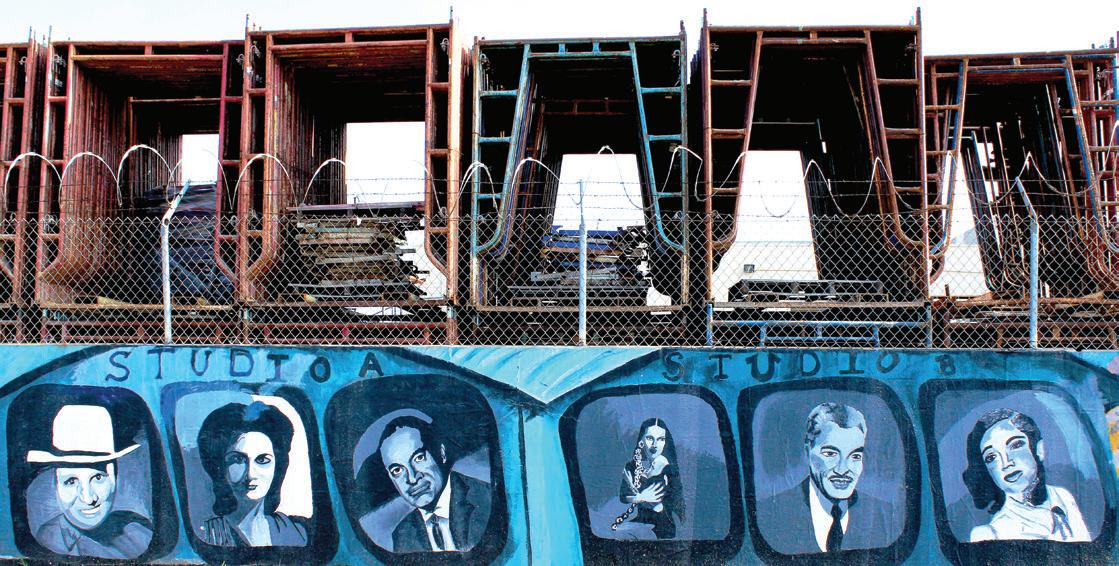
You don’t need to know Doc Brown or have a flux capacitor for a car to take you through time. For some, the mere sight and sound of some could be enough.
Lori Thornhill, a librarian at the Nethercutt Collection museum, says that it is the cars that made California street culture famous.

“It all started here in California with the Hot Rod and lowrider age,” Thornhill said. “It’s the weather and beaches, but most of all its Southern California that made cars famous with street culture.”
And every Saturday, in a parking lot in Valencia, Ca., these metal monarchs reign supreme.
Johnny Steur, the lead organizer of Valencia Car’s N Coffee, said he started the event about two years ago after moving to Santa Clarita and finding no local morning car events, and has seen the weekly gettogether grow.
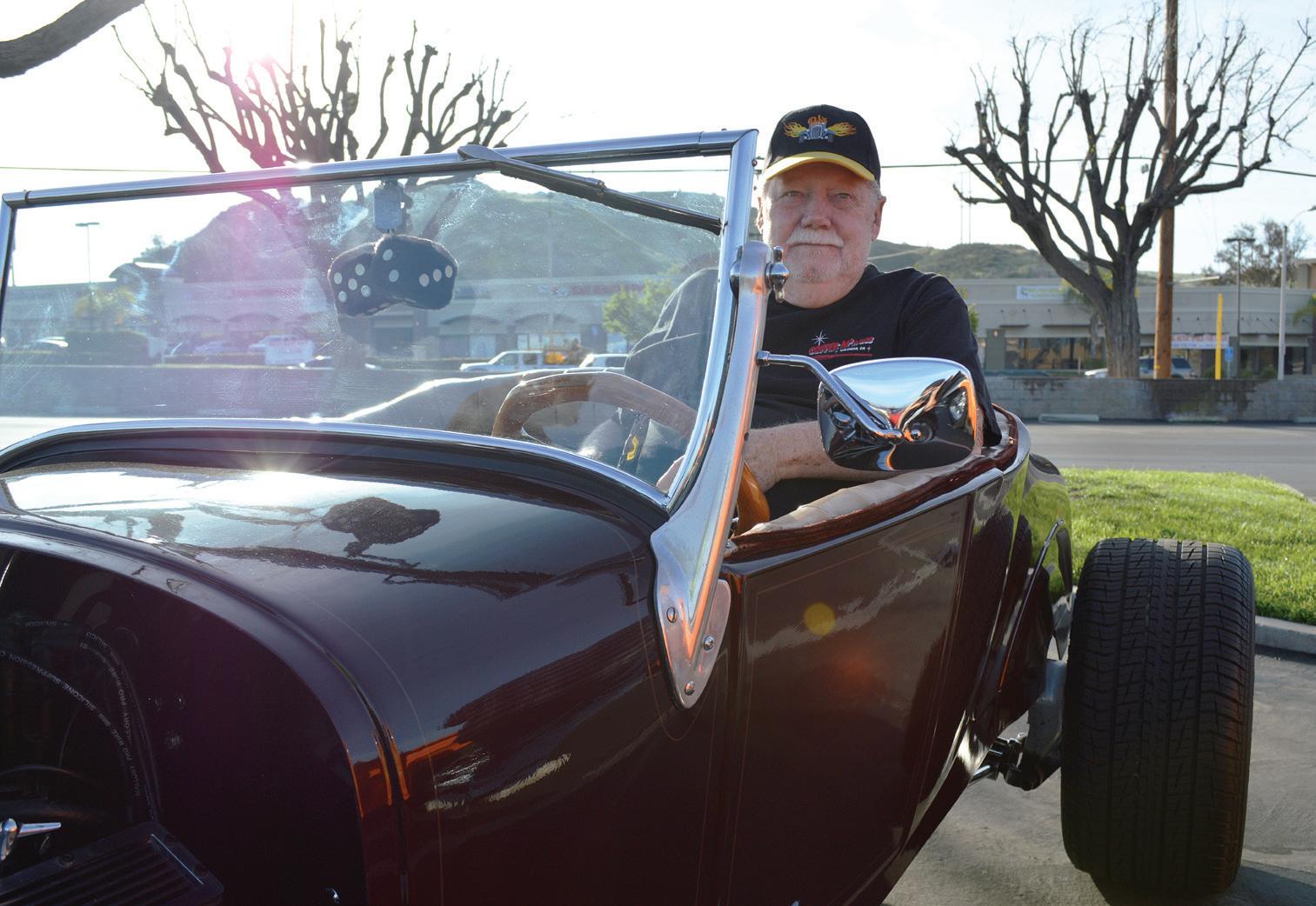
“I use to live near Glendale and I went to the La Canada Cars ‘n’ Coffee every morning for 20 years,” Steur said. “We started off at the Starbucks by In-N-Out with a small group and as we grew we then moved here at Western Bagel parking lot which is way bigger and the numbers started to grow”.
According to Steur, they average 50 to 75 cars regularly, and during the summer that number can go up to 100.
Crazy plum purple, sour apple green, sky blue, banana yellow, jet black and cream soda orange slapped onto Detroit iron hearkens back to a time where muscle ruled the road. Darrol Weber owns a 1969 Plymouth Story by Richard Espinoza Photos by Martin Moran TOP PAGE: A 1970 El Camino owned by Rick Fagan at Cars ‘n’ Coffee in Valencia, Calif., on Feb. 24, 2018.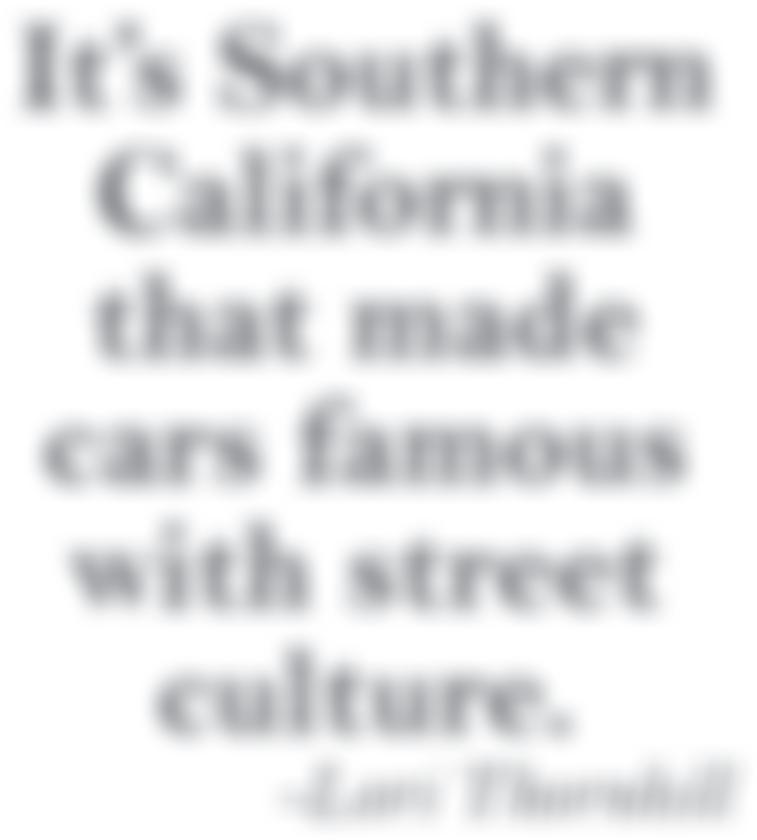
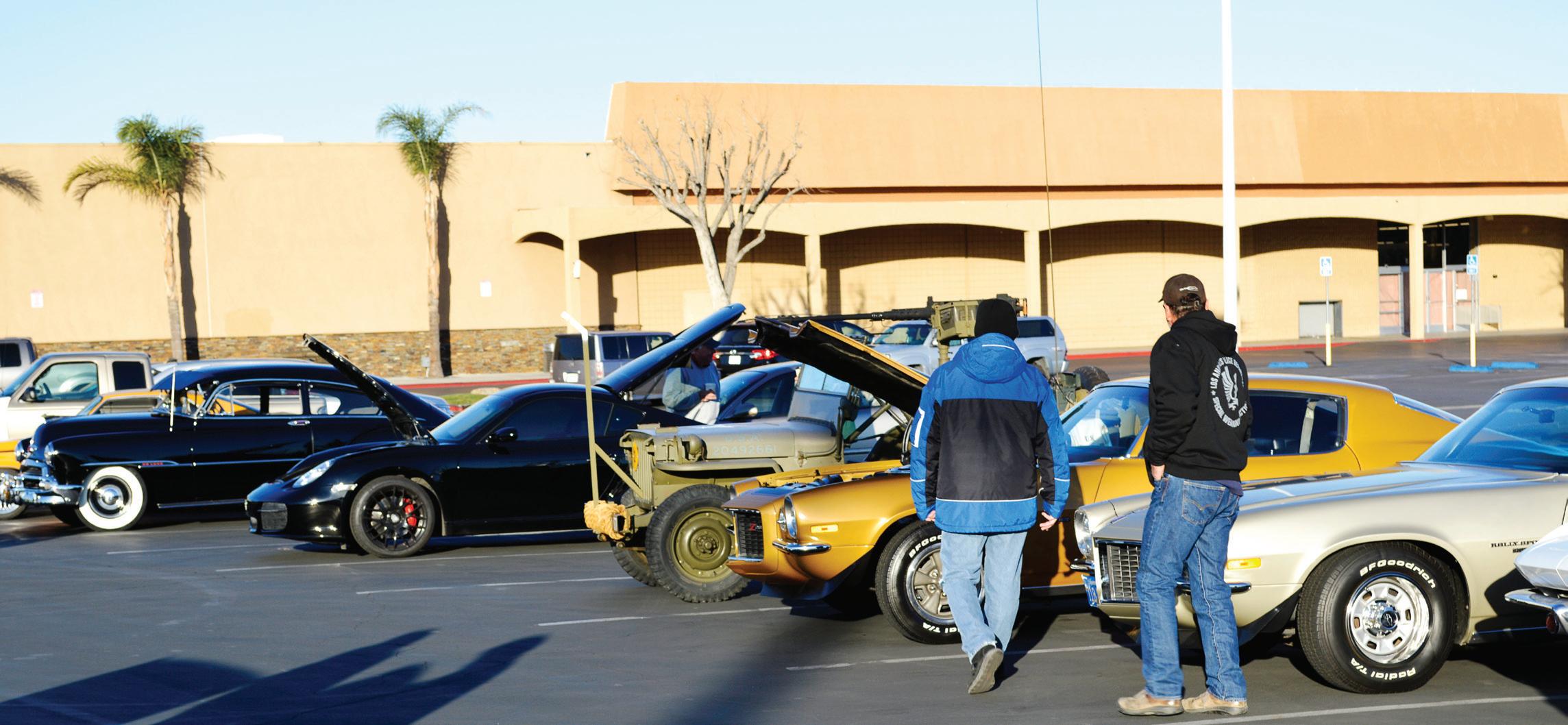
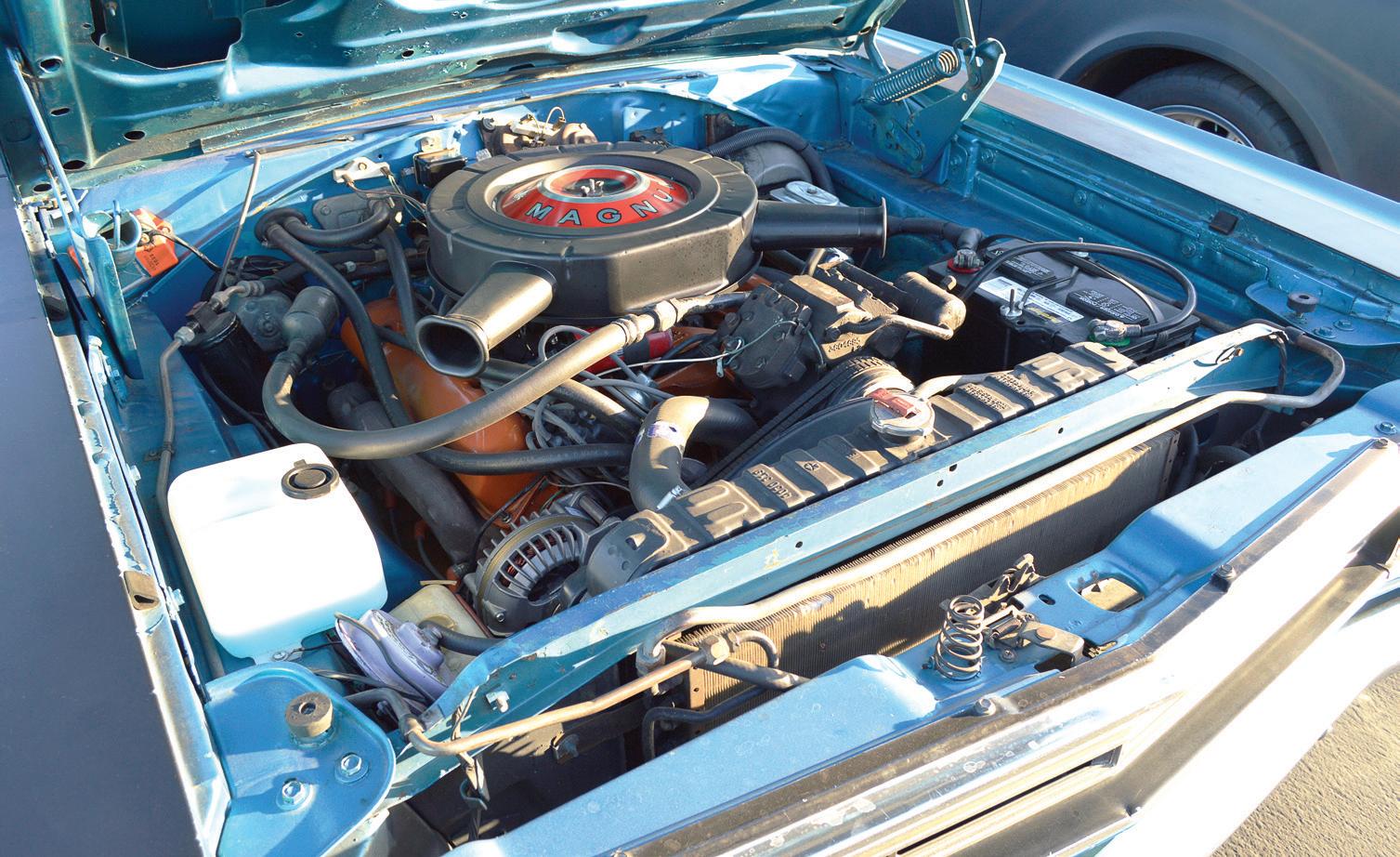
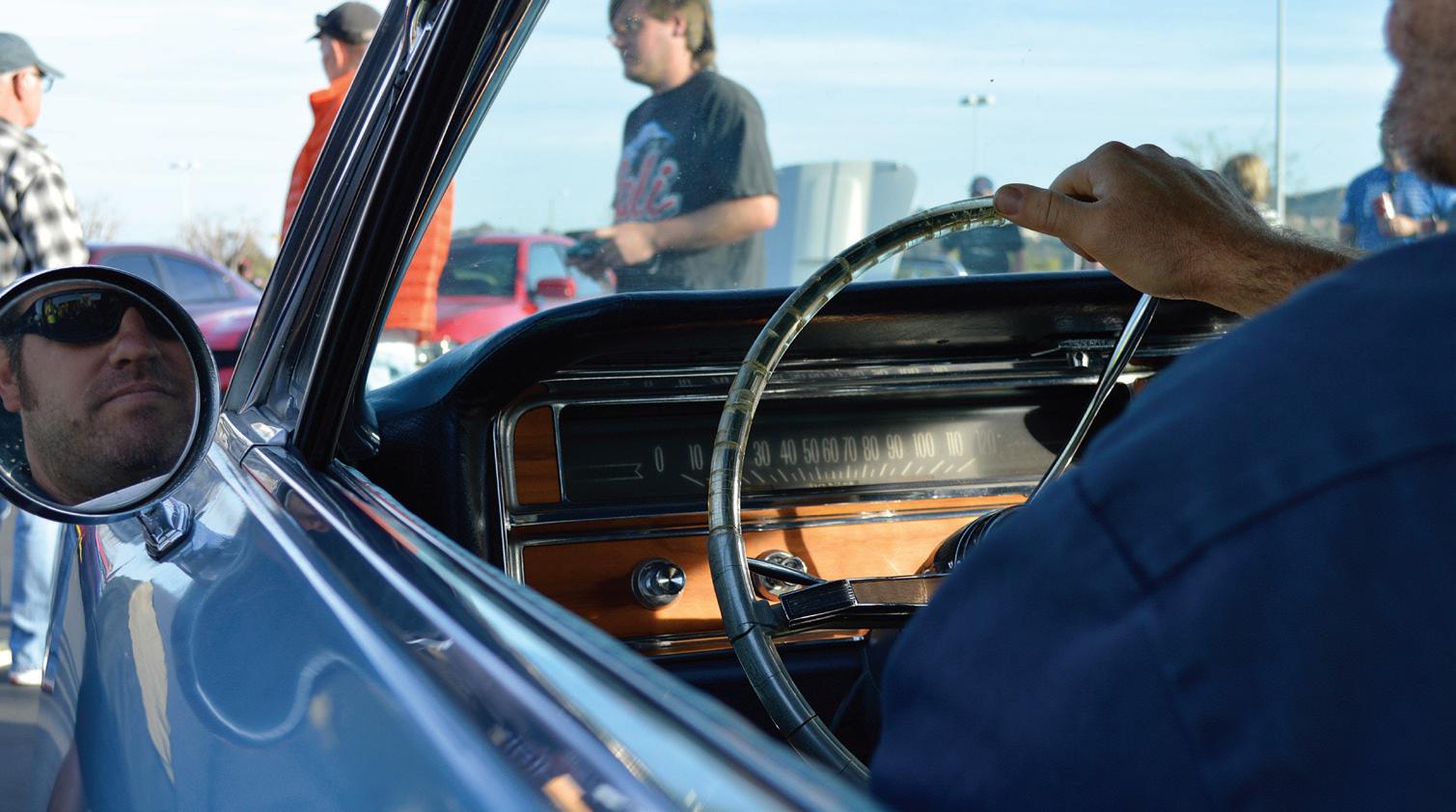 -Lori Thornhill
-Lori Thornhill
Roadrunner, and has used these meetups to network and meet people that could help teach him how to work on the car.
“I have friends who know how to fix cars and they teach me how to work on them,” Weber said. “It is hard to wake up at 7:00 am in the morning but it is worth it because of the people that you meet.”
Rick Fagan has been attending Cars ‘n’ Coffee since it started, and agrees with Weber’s sentiment about the people there.
“It is great to meet people with the same interest,” Fagan said.
According to the many of the owners who come to Cars ‘n’ Coffee, their cars have a special meaning to them. It was either a car they always wanted when their youth or a car that their parents once had and wanted to relive that special time of their life.
TOP: Johnny Steur, lead organizer of Cars ‘n’ Coffee, looks into the side mirror of his 1965 Pontiac Bonneville in Valencia, Calif., on April 7, 2018. MIDDLE: Under the hood of Darrol Weber’s 1969 Plymouth Road Runner at Cars ‘n’ Coffee in Valencia, Calif., on Feb. 24, 2018. BOTTOM: Spectators examine some of the vehicles at Cars ‘n’ Coffee in Valencia, Calif., on Feb. 24, 2018.In 1985, Nike changed the face of the sneaker world with the release of the Air Jordan. The association with the man that is arguably the greatest in the history of the game helped Nike create a hype that generates billions of dollars.
Over the years, the global sneaker market has grown exponentially, valued at $55 billion in 2015, according to businessinsider.com.
And manufacturers and retailers aren’t the only ones making money.
The popularity surrounding sneakers has spawned a resale market that, according to online sneaker database Stock X, is estimated to be worth more than $1 billion.
At the heart of both the retail and resale markets is hype and exclusivity. Lines around blocks can be seen on many Saturday mornings. Those crowds start earlier and grow larger depending on how exclusive the shoe is, with some releases being postponed or even cancelled due to uncontrollable crowds.
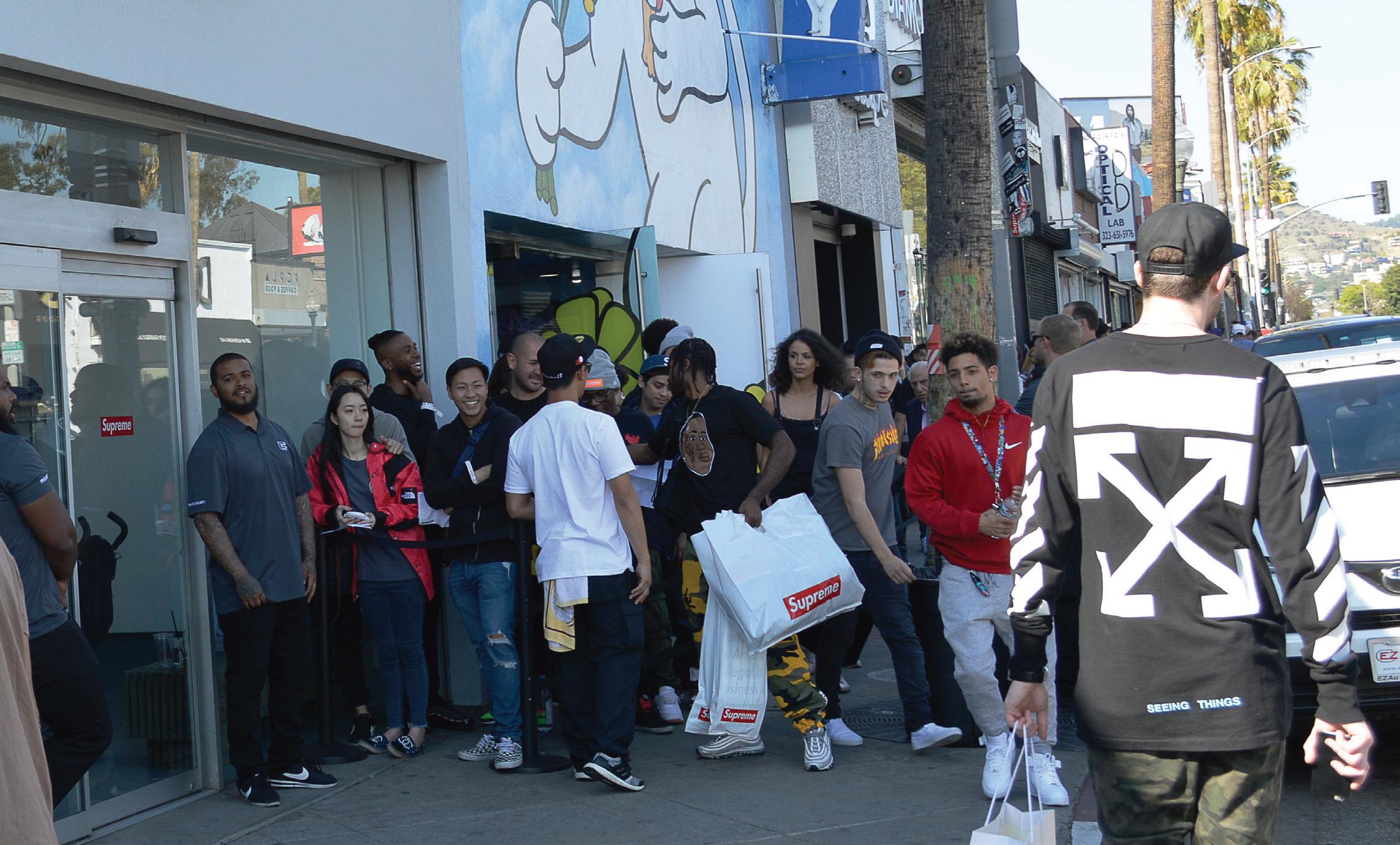
There are some who might blame companies such as Nike and Adidas for creating a limited supply, while others blame the crowds for showing a lack of self-restraint.
But Martin Karamian, the chairman of business administration at Pierce College, doesn’t believe the blame can be placed on any one side.
“The companies don’t create a hype in a vacuum,” Karamian said. “You can’t have a hype without the customers who demand it. Nike just makes shoes. Yeah, they endorse it, they give it to a celebrity, you see pictures of it on Instagram. But it’s the people who are making the demand.”
Abeel Shams, the owner of resale shoe store Cool Kicks, likes all the excitement surrounding releases.
“It just builds more hype around the sneaker,” Shams said. “It gets more fans for what we do for a living. It basically just helps the overall culture.”
Cool Kicks opened its first store on Black Friday 2014 in Springfield, Virginia, according to Shams. Less than two years later, Shams moved
out to Los Angeles and opened a second location on Melrose Avenue on June 1, 2016.

“Growing up, I used to go to yard sales and we used to buy used sneakers and I’d sell them on eBay. I knew it would be a huge market,” Shams said. “It was something that I knew you can flip. It’s like legal weed basically.”
Cool Kicks recently expanded, opening The Cool by Cool Kicks just down the block on Melrose. The Cool focuses on street wear, with brands including Supreme and BAPE on the racks, with the same buy, sell and trade mindset as their footwear shops.

“Supreme and BAPE are very huge in LA. Not just LA, but globally,” Shams said. “I just needed the right time to open it. We had just been so busy selling shoes. We were doing fine just selling shoes that we weren’t really even looking for clothes but people kept emphasizing it to us daily.”
The hype surrounding brands such as Supreme is possibly greater than that around sneakers. The clothing brand has sold numerous items with their logo slapped on. Trenching shovels, fire extinguishers and air horns have all been released with the recognizable box logo – all sold out in minutes.


Karamian sees the backlash regarding hype and resale prices as similar to the loan crisis from a few years ago.
“Nobody put a gun to anyone’s head, no bank forced anyone to sign those loan documents. The consumers signed it and they did it legally and willingly,” Karamian said.
It is also comparable to what is known as the “Wal-Mart Effect,” according to Karamian.

“Is it really Wal-Mart’s fault, or is it the local customers who decide to drive to Wal-Mart as opposed to go to the little store next door? The ‘Wal-Mart effect’ should really be called the customer effect,” Karamian said.
 A crowd stands outside the Supreme store on Fairfax Avenue in Los Angeles, Calif., for the Spring/Summer collection release on Feb. 15, 2018. The store made headlines during the release when actress Julie Newmar publicly complained about the crowds. Photo by Martin Moran
A crowd stands outside the Supreme store on Fairfax Avenue in Los Angeles, Calif., for the Spring/Summer collection release on Feb. 15, 2018. The store made headlines during the release when actress Julie Newmar publicly complained about the crowds. Photo by Martin Moran
Brick and mortar stores aren’t the only outlet for the resale market. Apps, eBay, Facebook groups and craigslist can all be used to buy, sell and trade sneakers, each with issues that consumers should know.

The latter two often require face-to-face meetups. These meetups can result in violence. ABC 7 LA reported that in 2016 the Los Angeles Police Department’s South Bureau recorded 45 robberies connected to face to face exchanges, though not all of them were sneaker related.
The next year, LAPD announced that safe exchange zones were available in the lobbies of nine stations through the West and South Bureaus, and an officer can be present on request. Zones were also set up in some Ralph’s stores in the area.
Violence and robbery aren’t the only areas of concern for buyers and sellers.
Fakes, replicas and unauthorized pairs have flooded the market. While some online retailers like GOAT and Stock X put pairs through a legit check, there is no way to know about pairs bought from eBay and other sites.
The brick and mortars also deal with fakes.
“We ran through a lot of fakes, I lost a lot of money,” Shams said. “But being in the business for a couple of years before I moved to LA was really helpful because you don’t want to build a bad reputation at a new store in a big city like LA.”
Shams said that all Cool Kicks employees go through training to spot fakes.
“Some slip through the cracks. There’s so many good fakes out there,” Shams said. “We base it off three strikes and you’re out. So if anyone buys three fakes we just fire them, but that’s never been a case for us.”
The exclusivity that drives the sneaker world is also the major pain for many sneakerheads. Most shoes have an online release from various retailers. However, these releases often are dominated by automated bots that are able to select pairs and check out in milliseconds.
“It really adds to the frustration of the releases from the perspective of consumers,” said Jordan Geller, creator of the Shoeseum. “I can’t tell you how many times a shoe released and within seconds, as fast as I possibly can click that button, somehow some way it’s selling out before I’m able to check out.”
Releases have grown more and more difficult. Some of the same
retro Jordans release every few years. The Black Cement 3 released again in February of this year, the first time since 2011. The release sold out everywhere. Geller remembers it being easier to get pairs from the previous two releases.
“In 2011, I picked up 12 pairs in my size at retail just by running around LA to the different stores,” Geller said. “In 2001, when they launched I was reselling on eBay, and I walked into a store three days before the release date and they had already had them out in stock in the racks and they were willing to sell them. And I bought like 10 or 12 pairs. However many I could afford at the time.”
Bots, resellers and increased popularity aren’t the only banes of sneakerheads. For years there have been stories, some proven true and some remaining rumors, that certain stores “backdoor” their shoes, selling them to friends, family and even employees before the general public has a chance, with some shops rigging the raffles even.
Just recently, during a live raffle at Blends in Beverly Hills, SnapChat user Gianniscenter pointed out what appears to be tape on the back of a winning ticket in the Facebook Live stream.
Since 1986, when Run DMC released “My Adidas,” sneakers and the hip-hop world have been a perfect fit. In recent years, the two have become even more intertwined. Kanye West’s name may be used more when talking about shoes than music these days.
In 2009, Nike released the Air Yeezy 1. In 2013, West took the Yeezy name over to Adidas. The new relationship is largely regarded as a main contributor for Adidas increasing its market share, overtaking Jordan Brand as the second largest sneaker brand in the United States.
Adidas has added to its list of hip-hop endorsers, adding Pharrell as his Hu collection, and rumors abound that Drake could leave Nike and hop over to Adidas.
“For artists, they’re more global in my opinion,” Shams said. “I think they reach a bigger platform, because music is really global, so is basketball but it’s still not a global sport like soccer or something.”
Shams doesn’t think the sneaker craze is going away anytime soon, and draws another comparison to it and hip-hop.
“It’s like music. Hip-hop will never die, any music will never die. The same with sneakers and Supreme,” Shams said. “It’s only going to keep rising. More people are getting influenced because not only are there tons of stores like us out there, their favorite celebrities are wearing these sneakers, these clothes and it’s only going to hype it up even more.”






An athletic-fi tting, ash-gray sweater absorbs the Southern California sun rays with an acrylic-based graphic design centered on the designer’s chest. He hoists up several fi nalized pieces of clothing in quartz, clear packages that are ready to sell at a moments notice.
Damyan Sanchez, founder of Coldpiece Clothing, represents the entrepreneurial attitude of street wear dominating Los Angeles and the world over.
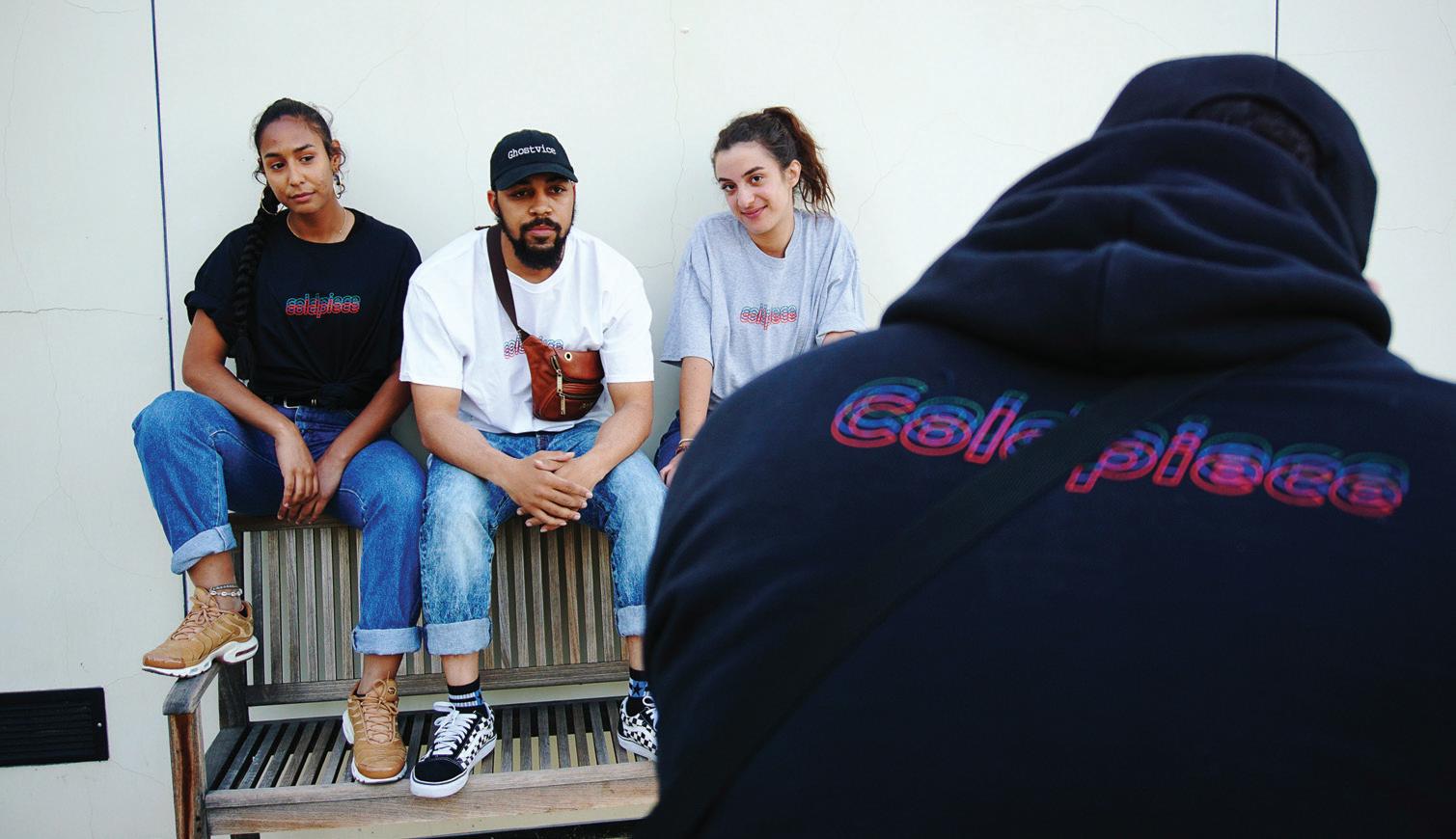

“I’ve been doing brands since high school,” Sanchez said. “I wanted to start something new out here, just start something different. I got the name Coldpiece just because I wanted to be on some different stuff.”
Vintage TV logos and funky shirts are some of what inspires this designer’s wearable creations. Sanchez also fi nds inspiration listening to music while assembling the latest clothes. Mostly hiphop, specifi cally Kid Cudi and Nipsey Hussle.
In the street wear culture, being different reigns supreme. Everything from off-centered stripes on joggers, crewnecks contrasting color ways, or even limiting the supply of a specifi c garment. Coldpiece mashes their own mold with
layered fonts and the cryptic use of The Virgin Mary covered by SMPTE-styled color bars. Sanchez approaches creating new designs with a process.
“If I have a certain image in mind, I’ll throw the image on their fi rst. Flip it around and then add a little font. I really try so many things before I set up the screen,” Sanchez said.
Coldpiece clothing uses the process of screen printing. The screen printing technique requires transferring ink over a mesh and on top of a stencil to produce the desired images, next it is warmed by a lamp and then dried. The screens Sanchez and the Coldpiece team use are stationed in the Palmdale area, 64 miles north of Los Angeles.
TOP: Albert Angel poses wearing a black Coldpiece hoodie in the Pierce College Digital Darkroom in Woodland Hills, Calif., on May 1, 2018. Photo by Bleu Briggs BOTTOM: Albert Angel takes promotional photos of hip-hop artist Reggie Rare and models at the Pierce College Center for the Sciences in Woodland Hills, Calif., on April 18, 2018. Photo by Martin MoranBuilding your brand, like anything, requires a team. Some people in Sanchez’s circle include his cousin Albert Angel and David Harris Jr.
Sanchez currently sells his shirts and sweaters in the range of $15 to $35, constructing a steady profi t margin –paving the way for affordability and options to expand with materials used and items Coldpiece can sell. Brands like Supreme or Bape are known to sell their items near $50 - $400. This is not even considering resell value that reaches toward thousands of dollars.
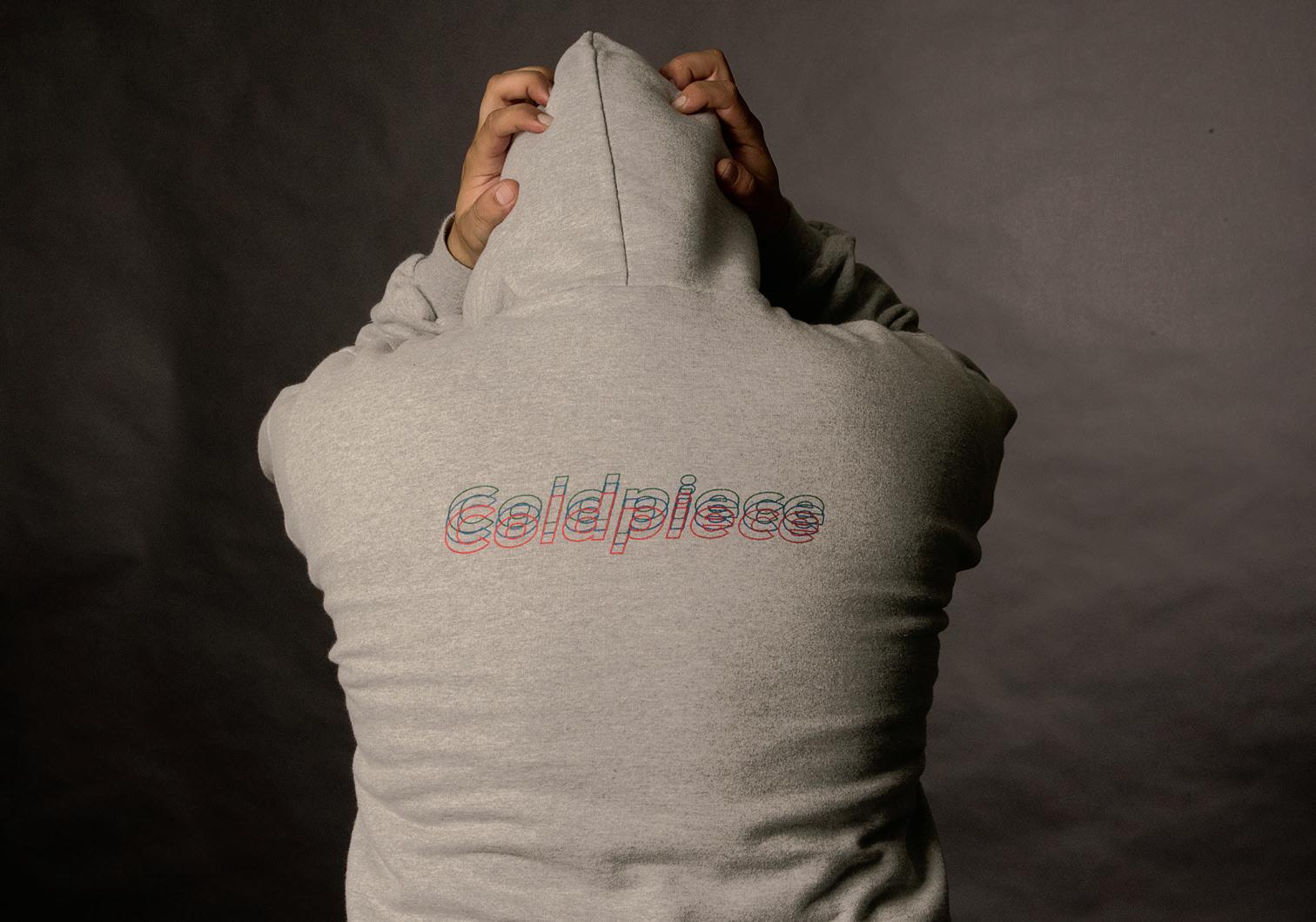

Big enough clothing lines in the street wear scene can gain cult-like followings. Some fans with the means even acquire their own labels – hypebeast.
Joseph Naranjo, a professor at Los Angeles Trade Technical College, provided context to the term hypebeast.
“This is just somebody who is really into trends,” Naranjo said. “They’re tastemakers. They are always one step ahead of what trends are and can pick up on small cues from things that they’ve gathered from observing people on the streets and understand how people are gonna start dressing in the next few months or the next season.”
The location of these trends play a vital role in the street wear market. Skaters, athletes, artists and more are known to scour Los Angeles County for the latest drops of the season.
Sanchez said the rise of in consumers and sellers contributes to the street wear community.
“I think it’s cool. That whole attention that’s getting out. I think it’s good for the culture,” Sanchez said. “All these brands gone pop up. Everybody is just trying to have a brand now and it’s good for everybody.”
Sanchez said he sees the trajectory of Coldpiece clothing among the starstudded names in the coming years.
“In the next 2 years I see it pretty established and pretty known here in The (San Fernando) Valley,” Sanchez said. “In the next 10 years, I just want it to be a big name like Undefeated and Stussy.”
With the integration of social media this last decade, countless names have ascended thanks to instantaneous word of



mouth.



Naranjo brought up the similarities seen in attire across the world in the classroom.
“Across the world people are just starting to look more and more alike. We share the same internet,” Naranjo said. “Everyone follows the same tastemakers on Instagram and watches the same movies, listen to the same music all across the globe, so people are starting to look a lot alike.
Naranjo also gives insight into what helps a brand break through and stay around.
“Whatever the product is that you wanna do, just stick to that and eventually people will come up. That’s how you build a brand,” Naranjo said. “If you are making a product that can stick around and that is true to you, that’s gonna be what keeps you relevant.”
Those brands that have stayed around are revered for their individuality and freedom to make their merchandise as they please. And having the chance to establish the Coldpiece name with the likes of a Hollister or Gucci for street wear gives Harris Jr. solace.
“Their stuff is fresh. It’s more of a sign – a symbol of status,” Harris Jr. said. “We can put that together in our community and we eat with it. I don’t see why we can’t do that.”
As big as they will go, Sanchez does know the perfect place where he would want the fi rst brick-and-mortar store for Coldpiece to be.
“I’ve always said the main one, like Topanga. Topanga’s great though. It’s big. It’s the new wave, the valley,” Sanchez said. “I want it everywhere.”
TOP: Damyan Sanchez and David Harris Jr. stand outside of The Reserve at Warner Center in Woodland Hills, Calif., on Feb. 17, 2018. Photo by Martin Moran BOTTOM: Albert Angel holds the hood of his sweatshirt over his head with his back to the camera in the Pierce College Digital Darkroom in Woodland Hills, Calif., on May 1, 2018. Photo by Bleu Briggs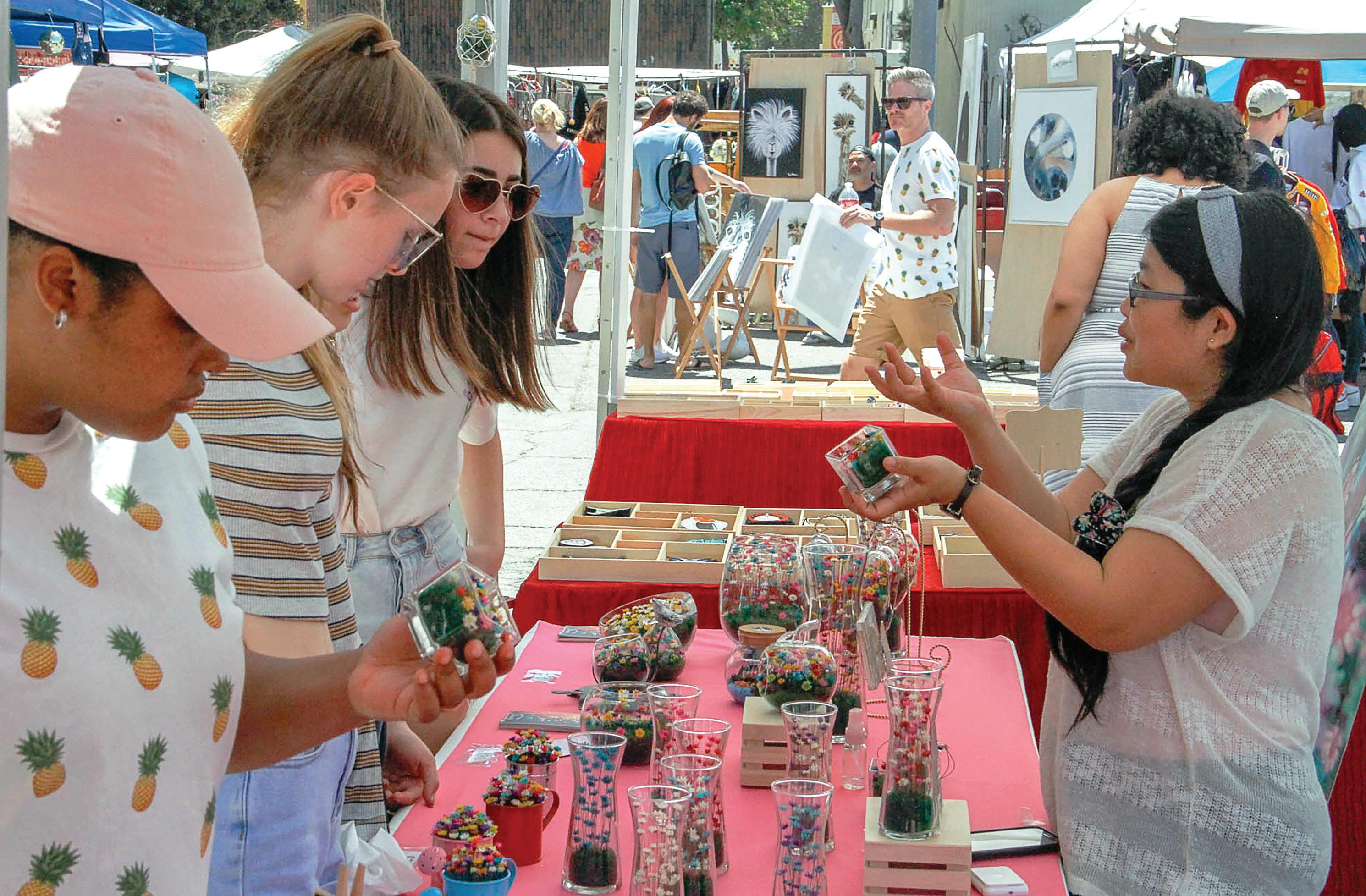
Acasual sunny day on Melrose Avenue is accompanied by a string of people lined up to get in. Expectant buyers eagerly wait to approach the front of the line to enter the Melrose Trading Post.
As people enter, an instant attack of oddities surround the guests. Crystals, metal antiques and hand-crafted bamboo skateboards are first to greet visitors. And maze-like booths filled with one-of-a-kind items are on display to intrigue potential buyers as they sort and search for unexpecting treasures.
The maze leads around the Fairfax High School parking lot, where in the back lies a play house. It sits as a reminder of what this swap meet has been built over the last 20 years. A foundation for artist, creative, and learners alike.
The Melrose Trading Post has been a mainstay in Hollywood for two decades now. Originally set up to help fund the school where it is hosted, Fairfax High School, it has now grown into a community of artist and antique traders alike.
Pierson Blaetz, the co-founder of the Melrose Trading Post, said that the trading post was started to help the school.
“We wanted to do art education, but when
we came down here that’s not what they needed. They needed basic stuff,” Blaetz said.

Fairfax High School was impacted back in the 1990s.
“The school was built for 1,800 students,” Blaetz said. “In 1997 it was at 3,700 students.”
“We were lucky to get 500 people into the parking lot. Now we have 6,000,” Blaetz said.
He said the swap meet started to provide revenue to the school and that tradition has continued. Blaetz said they have brought in $8 million for the school, and they pay for all of the newspapers for the journalism class.
Blaetz said the school was looking for help.

“We had a background in nonprofit,” Blaetz said. “So, we decided to do a oneday event in this parking lot, and it never stopped.”
Blaetz has seen the Trading Post since the start. They started with 40 vendors and they now have more than 200.
Blaetz said that being a nonprofit is a humbling experience when it comes the business side.
“We give double everything we make,” Blaetz said. “You gave. It’s a missionoriented organization.”
The marketplace is celebrating its 20th anniversary this year. The milestone is not a sign of anything slowing down. Blaetz
We were lucky to get 500 people into the parking lot. Now we have 6,000.
-Pierson Blaetz
doesn’t want this to change how anything is going to function.
The swap meet has expanded from the antique show it once was. Natalie Iturbe, an event organizer, said that artists have started to take residency.
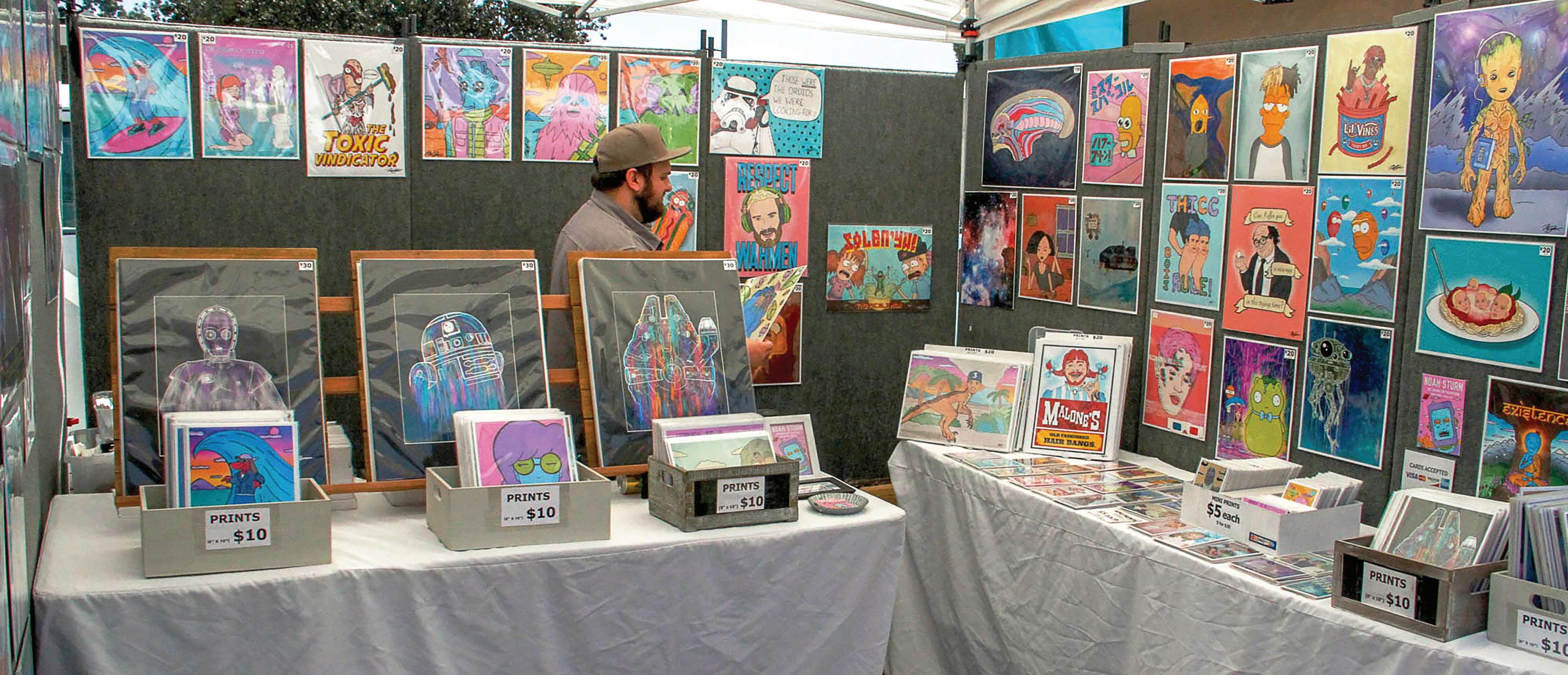
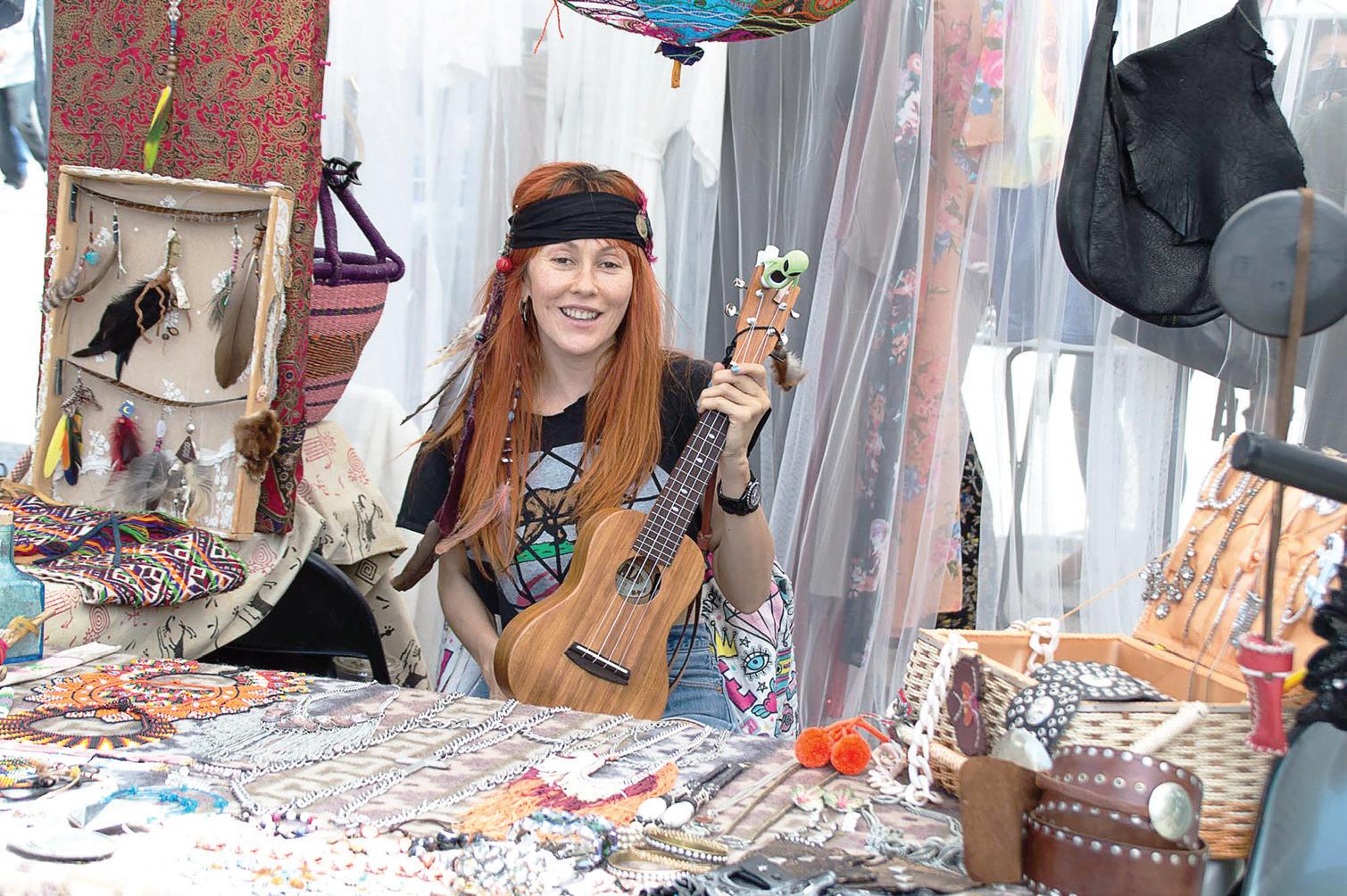
“We have a lot of original artists,” Iturbe said. “And that’s always a special thing to meet the artists face to face and get to know their work, and ask them questions about it.”
These new more artistic vendors have brought with them a new crowd. Many of the patrons are younger and looking for clothing or something to express themselves with.
“We have people that are local designers,” Iturbe said. “We have a lot of people that had make items.”
The original antique vendors are still the backbone of the Trading Post. Iturbe said that the long-lasting friendships of the vendors is what keeps the Trading Post continuing.
“Their connection to it, and the connections they made, really makes it a different place than going to a mall,” Iturbe said.
This is not a take away though. It is allowing for the swap meet to continue and allow for Greenway Court Theatre, playhouse that is on the campus, to exist.
“It’s so nice balance to have an artisan market and a theatre. They really connect each other,” Blaetz said. “The theatre creates a good environment to work in.”
The Trading Post allows the Greenway to stay afloat. Blaetz knew that theatres run normally at a deficit, and having the Trading Post allows for the theatre to exist in the way it does.
The playhouse is comprised of
professionals. While it does work with the high school to put on performances it is mostly for Blaetz company.
The playhouse is a community staple with events such as Da Poetry Lounge, a weekly open mic night hosted by Shihan VanClief.
VanClief was one of the original founders of Da Poetry Lounge. VanClief said that he first met Pierson at the Y.
“He used to play with one of the other founders, Poetry, used to play with him all the time. And Poetry invited him to our old place,” VanClief said.
VanClief said Baeltz asked if he wanted to move in to Greenway.
“He asked if we wanted to move here and
We’ve been in June of 2000,” VanClief said.
VanClief, who has been living as a Poet since the late 1990s, enjoys the community he has built around Da Poetry lounge. Being a part of Greenway as continued to allow the community as a whole to thrive.
“I think it’s cool because they are both actors and both into theatre. It made sense since they know what it is to build something from scratch,” VanClief said.
Blaetz is happy with the community he and his partner have made from their swap meet.
“We started something so small, it’s great that it is still continuing and will continue,” Blaetz said.
Super Jem, a vendor at the Melrose Trading Post, sits at her booth at Fairfax High School in Los Angeles, Calif., on April, 14, 2018. Photo by Damiesha Williams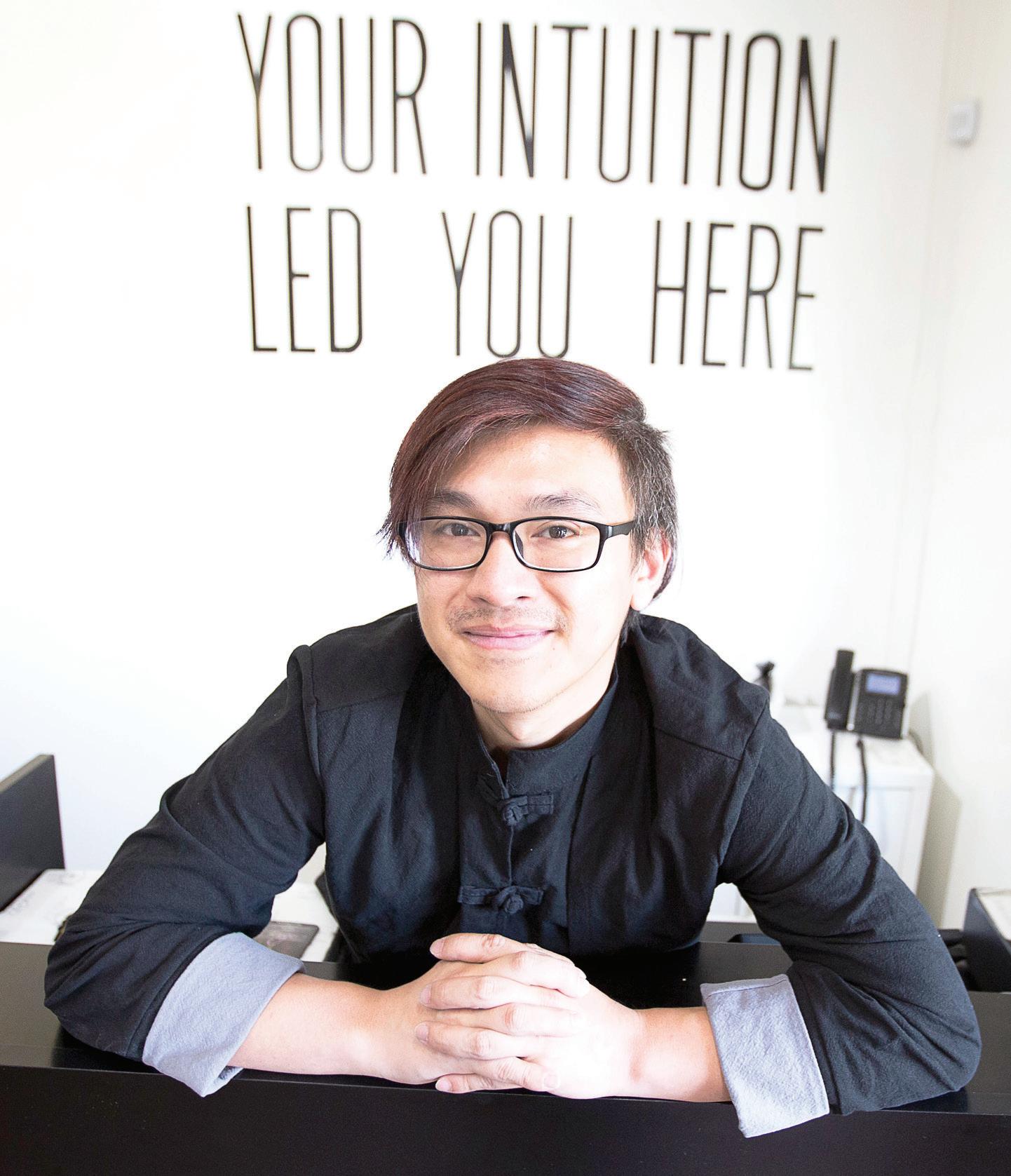 Story by Anna Clark Photos by Taylor arthur
Story by Anna Clark Photos by Taylor arthur
The white painted words pop on the black stone wall that faces Sunset Boulevard, acting as an invitation to climb the steep concrete steps, welcoming curious visitors with purple flowers as they ascend two floors.
Rising above street level, each step reaches closer to the entrance of House of Intuition, a Los Angeles shop filled with candles, crystals and items dedicated to metaphysicality.
Ryan Trinh, the shop’s reader and assistant manager, said that the stairs that lead clients up to the shop are more than what they seem. They symbolize rising above everyday existence.
“It’s a pilgrimage to get up here,” Trinh said. “So you have to want to come in. You can’t just stumble in here without a desire to know what’s up there. It’s a quest in a sense.”
In a time when communities and citizens were still recovering from the recession, 2010 also was the year where House of Intuition owners Alex Naranjo and Marlene Vargas took a leap of faith.
“They were very much invested in this idea of owning a spiritual shop,” Trinh said. “They were very spiritual people. They actually went to go see a reader who told them, ‘Yeah, you’re going to get it.’”
And they did.
What started out as a place primarily for readings developed into a second home for inner-awakenings.
In an email, Vargas wrote that their mission for House of Intuition is to have a space dedicated to spiritual healing.
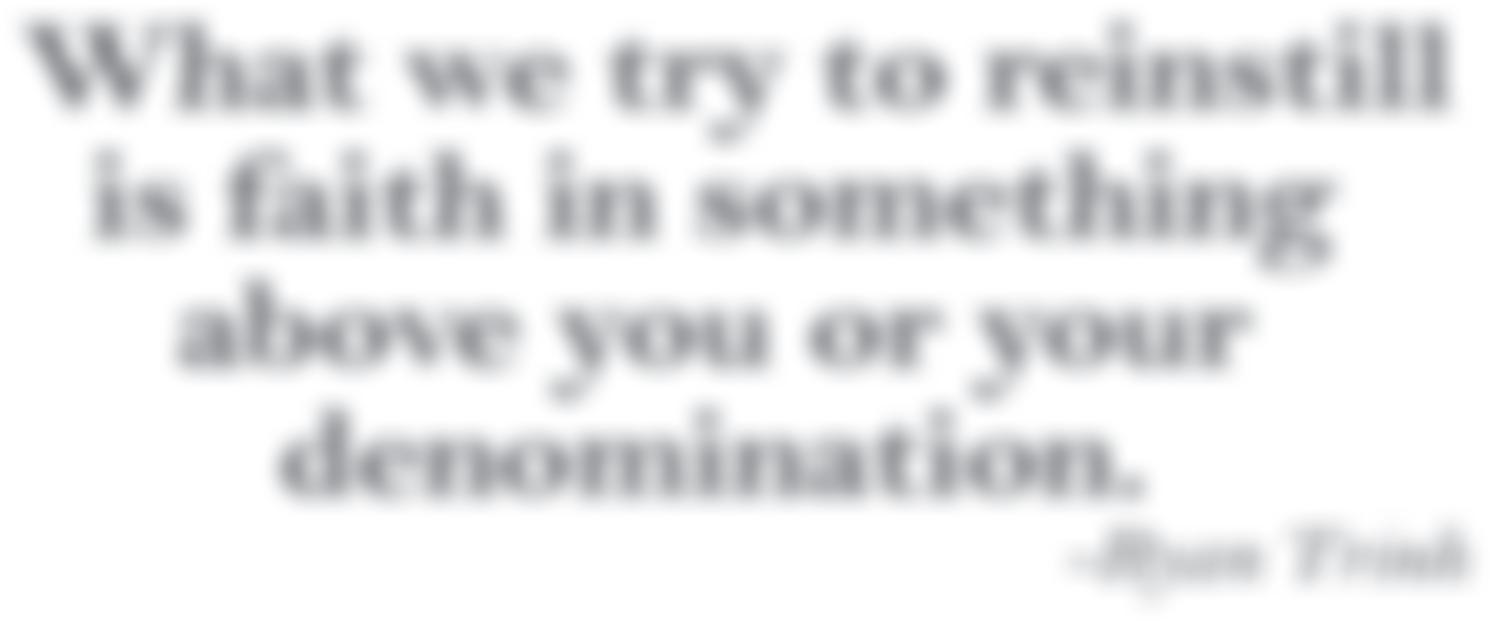
“We are here to teach and inform our customers about what they can do for themselves and instill in them their own power to manifest their own truths,” Vargas wrote. “With the amount of modernization occurring around us, it is important to have a store that can keep up with the times and still hold true to their metaphysical and spiritual work.”
Trinh said clients started requesting metaphysical products a few years ago, so they began to carry the merchandise.
House of Intuition has four locations— Echo Park, West Hollywood, Highland Park and Santa Monica. The Echo Park location is the only one to offer readings and healings.
Metaphysical shops became popular in America in the 1980s, but the idea originated
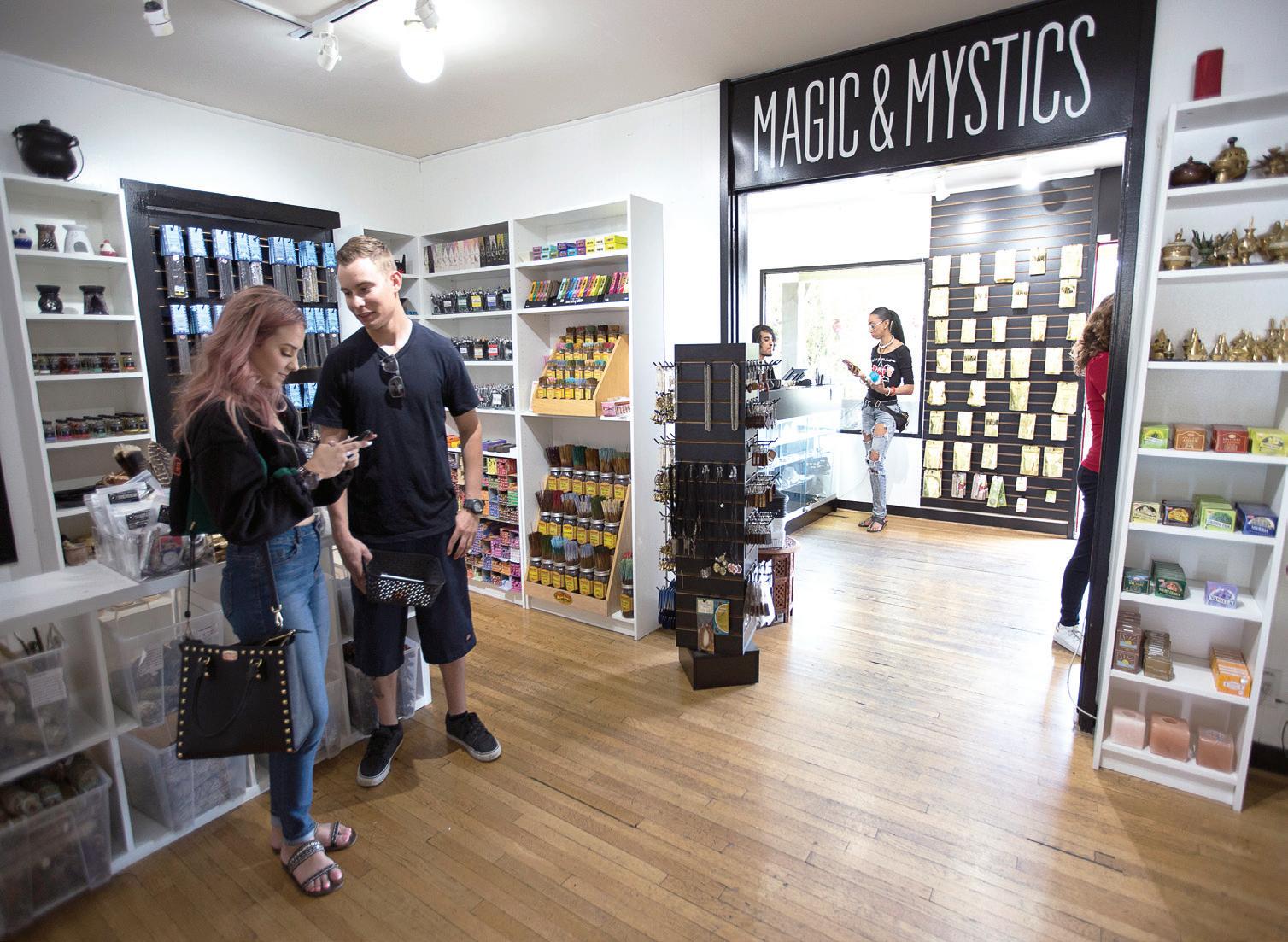
before that, said Pierce College adjunct instructor of anthropology Erin Hayes.
“Since the 1960s people in the United States have been searching for alternative belief systems,” Hayes said. “So, there was an opening for those kinds of things.”
According to Hayes, times have changed for the community surrounding metaphysical shops.
through a difficult time in his life. As a customer, he fell in love with tarot and began to take classes, soon joining the staff.
“I’m helping people on a more meaningful level in a sense,” Trinh said. “I’m helping people find their path. It helps people a lot to have someone who’s understanding of their problems and their issues and to provide answers.”
“It’s becoming more mainstream, whereas maybe you might not have walked into one of those stores 20 years ago, but now you’re willing to go down and figure it out,” Hayes said.
It was about six years ago when Trinh discovered House of Intuition while going
Trinh said the process of setting intentions has a lot to do with reaffirming daily actions.
“If you feel lighting a candle will make you feel like you’re on your path, if you feel like meditating with a crystal is going to be on your path, the fact that you’re
Customers wander around the Magic & Mystics section of the House of Intuition in Echo Park, Calif., on April 13, 2018.What we try to reinstill is faith in something above you or your denomination.
-Ryan Trinh
doing something with intention is already magical,” Trinh said.
In the hustle and bustle of LA, Trinh said that many people in the city are in the middle of a transformation.

“Everybody’s trying to do something new and they just can’t,” Trinh said. “And when we get put into that sense of futility and hopelessness, what we try to reinstill is faith in something above you or your denomination.”
A belief system is common in human beings whether or not it is spiritual, said Mary Hardy, an adjunct instructor of anthropology at Pierce.
“Even people who are strict secularists often have some aspect of their lives where they rely on luck or something that isn’t scientific to get them through areas where they’re feeling like they lack control,” Hardy said. “Where there’s uncertainty, sometimes they adhere to their non-religious beliefs as if it was a religion itself.”
Regardless of anyone’s belief system, House of Intuition hopes to serve as a place that can provide comfort and peace.

“We do provide that kind of quiet meditative state when you’re in here,” Trinh said. “It’s a space for you to kind of explore yourself. It’s a walking meditation in a sense. You’re walking around taking it all in, calming down, which is the most important thing.”
One way House of Intuition creates that calming atmosphere is with an outdoor garden where clients can sit and take a deep breath. It’s also known for its myriad of colorful candles that line the shop walls.
Trinh said that the power of a candle is not necessarily where you buy it, but the intention that you put into it. The candles sold at House of Intuition are one of a kind. They are prayed over before leaving the warehouse where the are made, according to Trinh.
“If we were looking at it in modern day spirituality, a candle is the manifestation of the four elements,” he said. “You get the earthy element of wax by solidness, water by the liquid form of wax, fire and smoke— light, air—so it’s really good to have those different balances in your altar.”
Los Angeles is known for being a place of cultural diversity and acceptance, and House of Intuition holds those virtues close. Trinh said that House of Intuition stays neutral and welcoming by being nondenominational and culturally unbiased.
“We have a lot of intermingling of ideas and cultures to help kind of further us along,” Trinh said. “Of course, you do
find some people who are cultural purists. Some shops are focused on a specific kind of culture.”
As the metaphysical culture continues to grow and expand, it also is becoming more accepted, Hayes said.
“Talking about magic helps us to understand it as a social phenomenon, rather than kind of something scary and dark,” she said. “I definitely think that people today are becoming more knowledgeable about the world around them. So it seems people are more accepting of different kinds of ideas, especially in LA.”
Trinh said that he hopes to see more understanding in the field of metaphysicality.
“I always thought that the metaphysical was very much old school and old culture, but I’m very amazed to see how we here have grown into such an adaptable cultural phenomenon,” Trinh said.
The words “Your Intuition Led You Here” mark the stairway leading up to the House of Intuition located in Echo Park, Calif., on April 13, 2018.